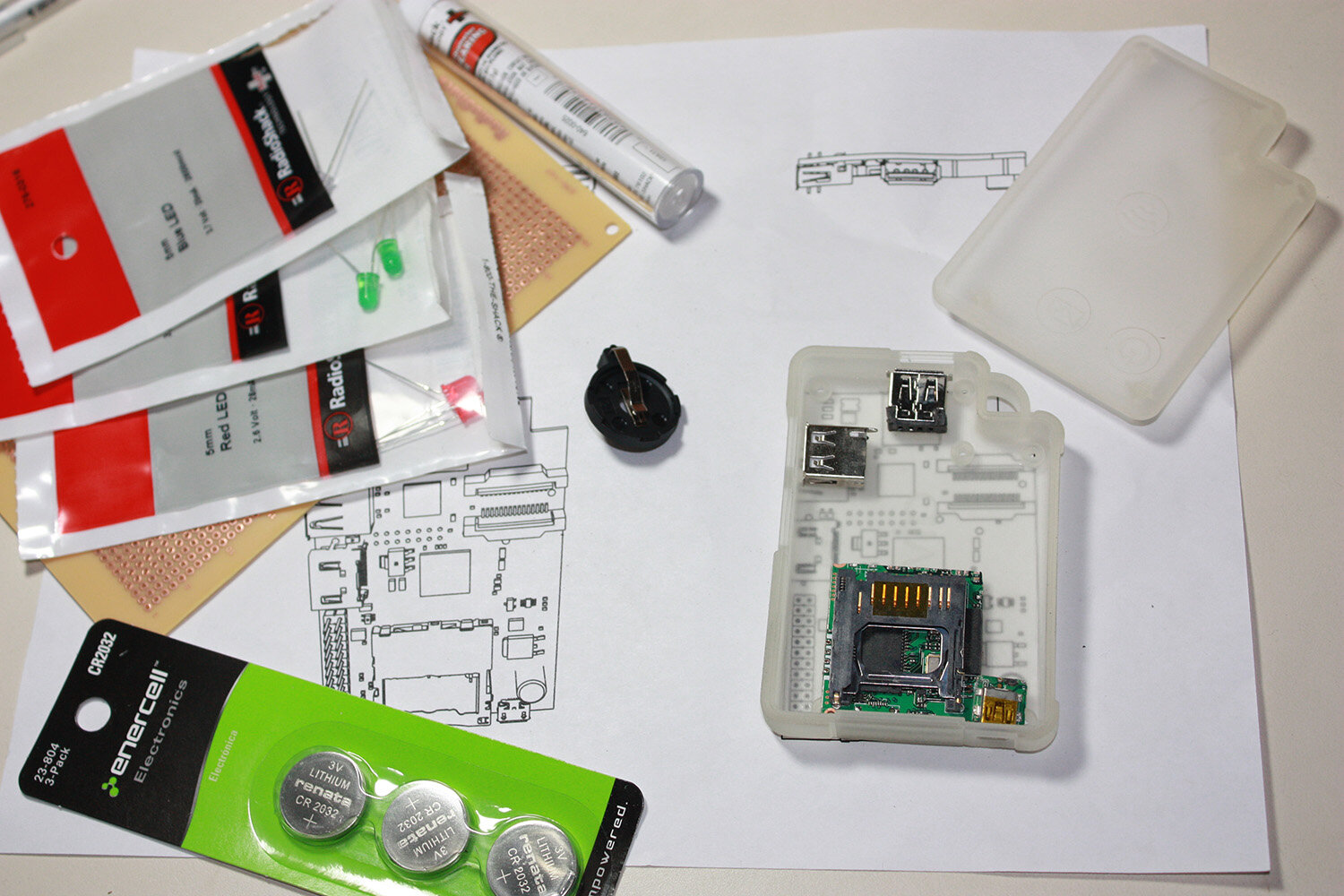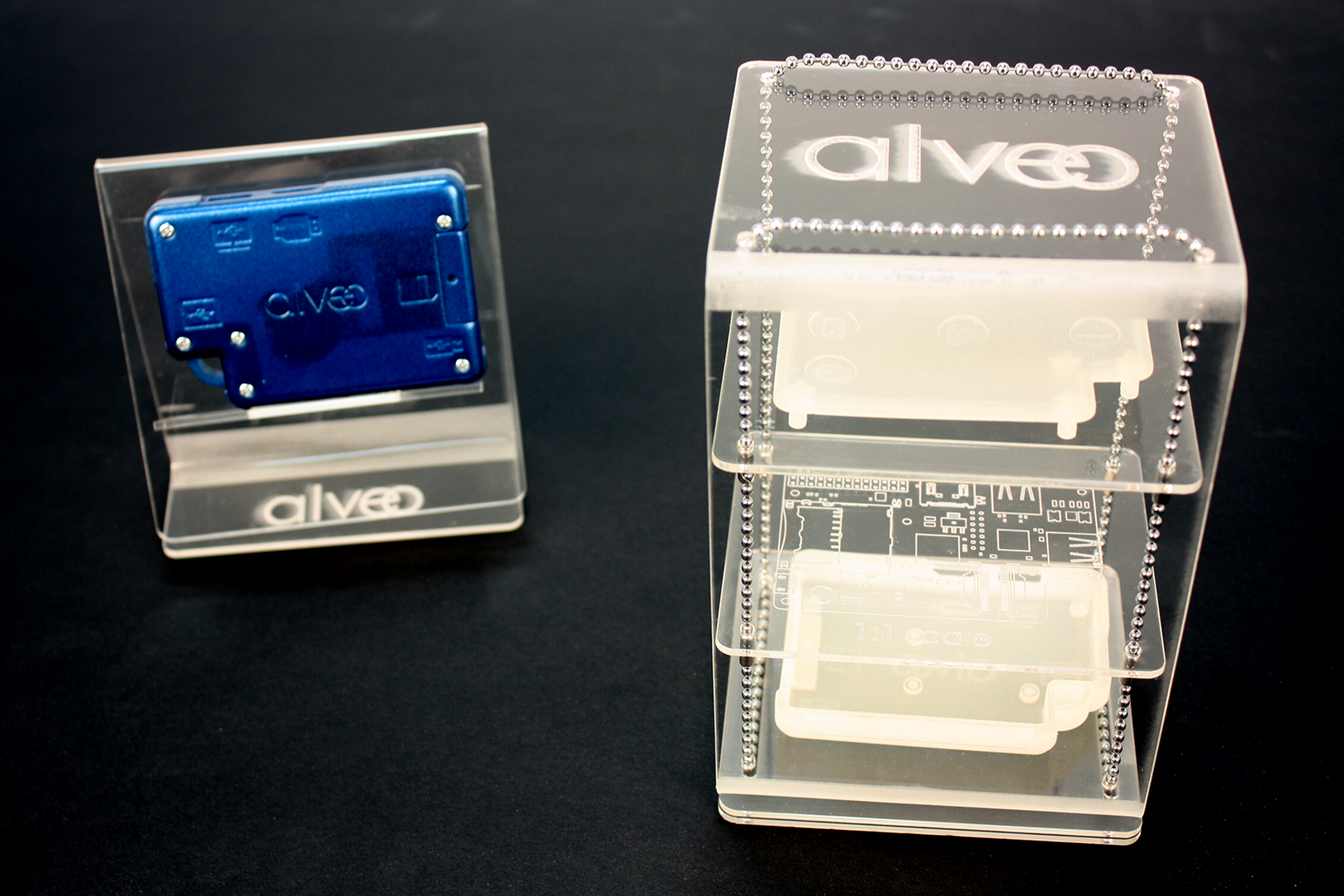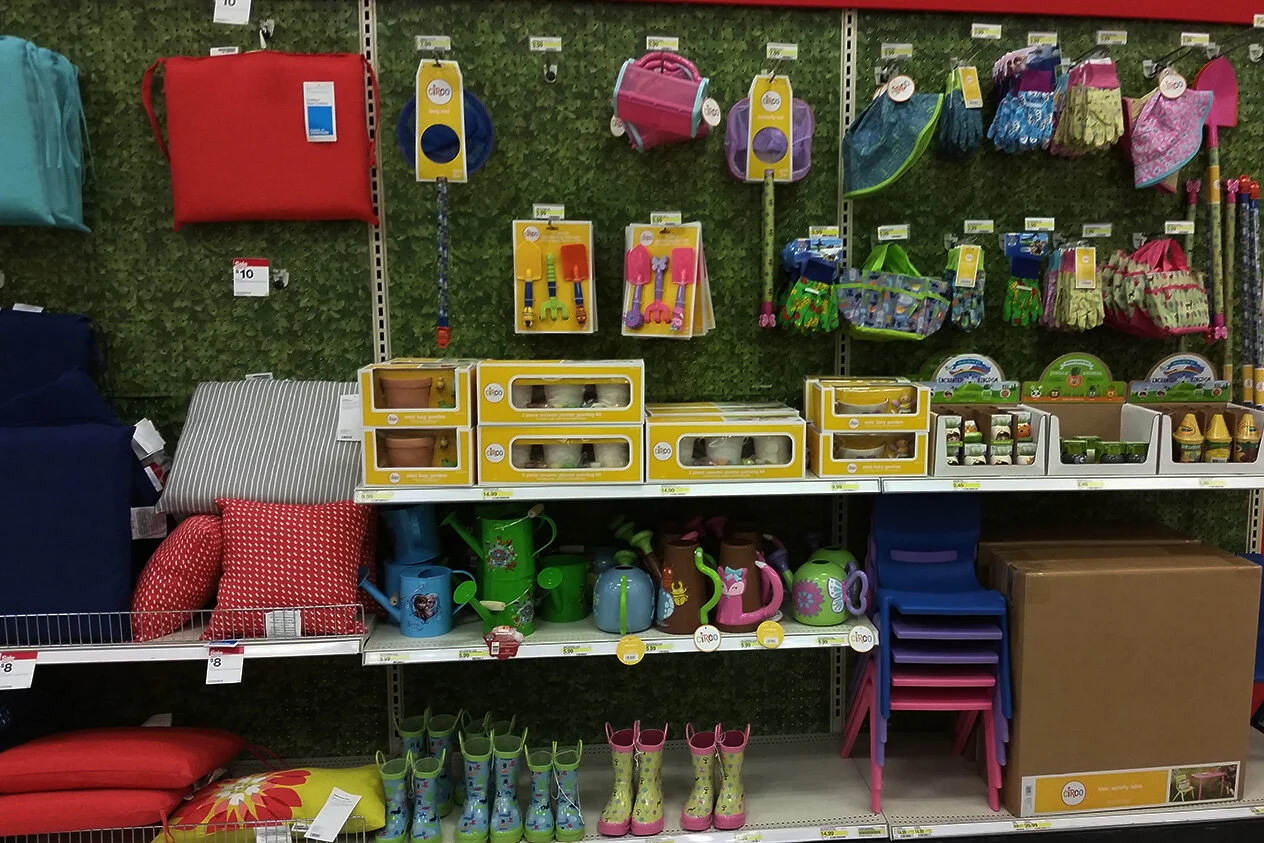Educational Technology
alveo
This long term individual project seeks to apply design in educational technology by utilizing affordable technology to expand the benefits of tablets in public elementary schools.
Portable Educational Technology Concept
This long term individual project seeks to apply design in educational technology by utilizing affordable technology to expand the benefits of tablets in public elementary schools.
Background
This project is intended to resolve the issue of accessibility to educational technology for ‘at risk’ public elementary students. There is an increasing presence of tablet PCs in schools to enhance the learning process and the iPad has seen serious traction in the US elementary school system. By developing an affordable system solution I posit that the benefits of tablets can be provided to students beyond the classroom at the end of the school day.
Through designing an affordable, easy to use peripheral device the student experience with educational technology can be extended into the home. Along with this device, I outlined the framework for the application that will be installed on the iPads as well as recommendations for implementation of the alveo system.
Research- Mixed Methods
My literature review included various educational technology publications. Three key themes emerged:
educational technology in public schools
1:1 student to computing device implementations
the impact of technology (on students and teachers)
Additionally, my mixed methods approach included formal interviews, semi-structured interviews and surveys. Interview protocols were supported by concept diagrams to prompt feedback, derived from four central objectives:
making Educational technology more accessible
enhancing educational experiences for both teachers and students
extending educational technology beyond the classroom
designing to leverage educational technology trends
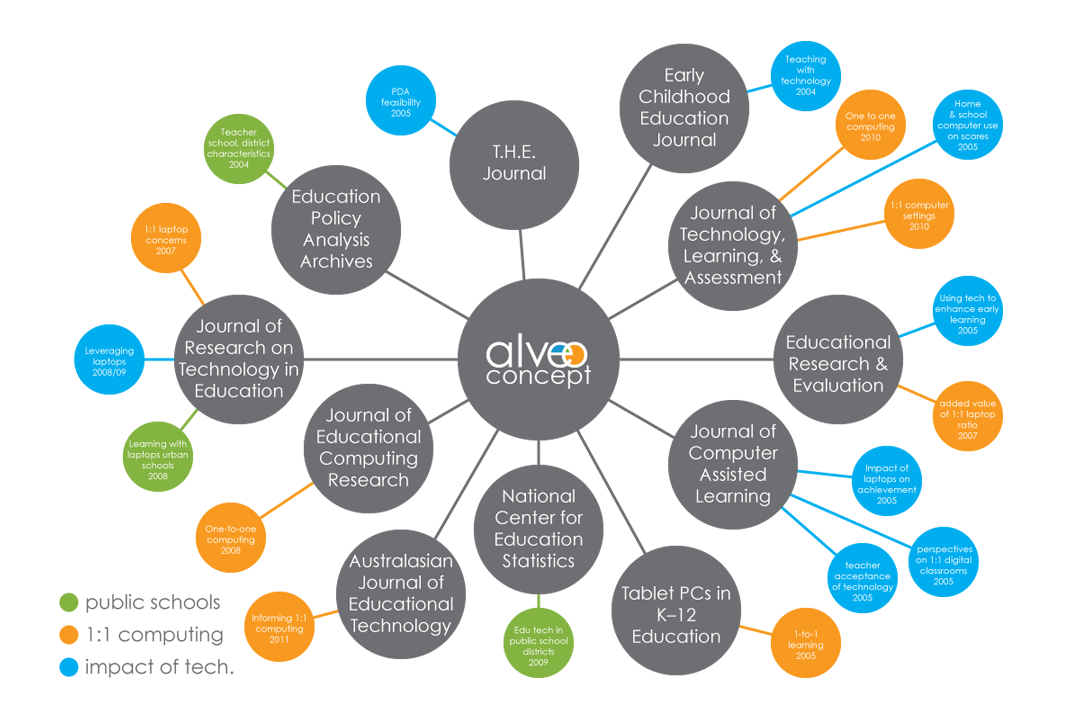
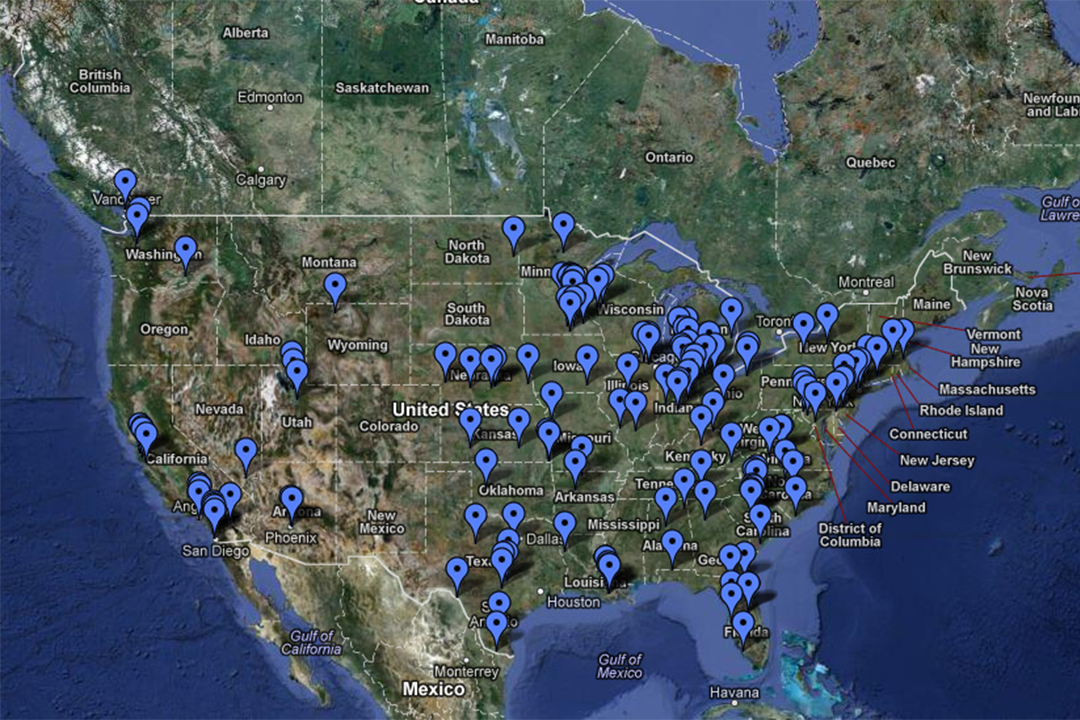
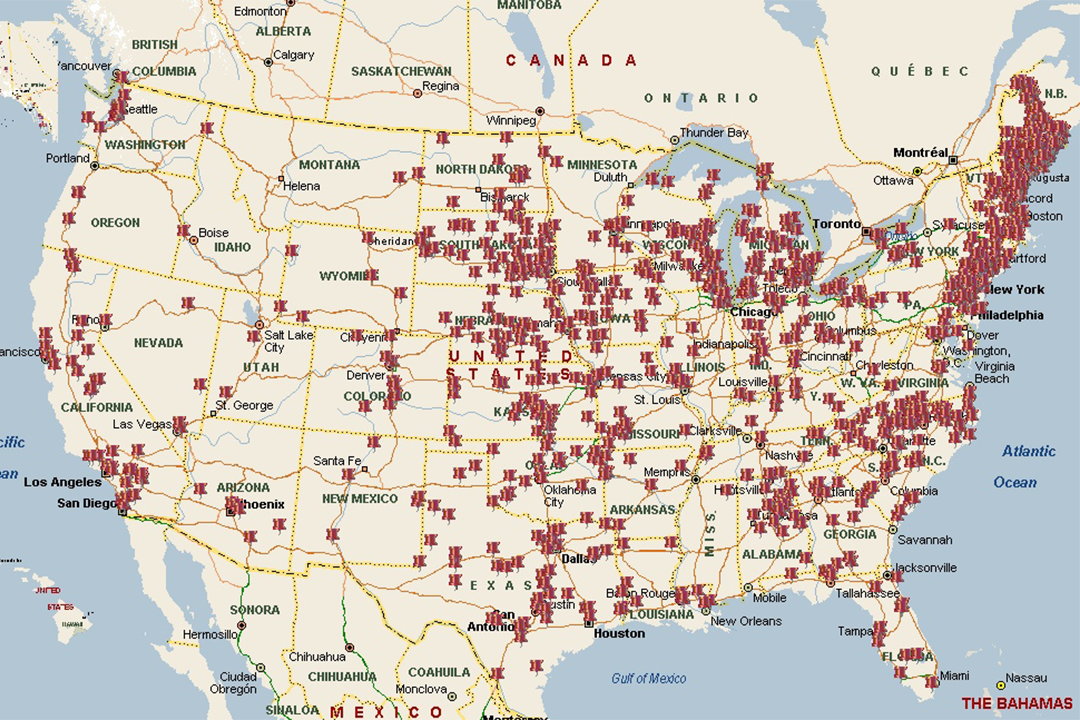
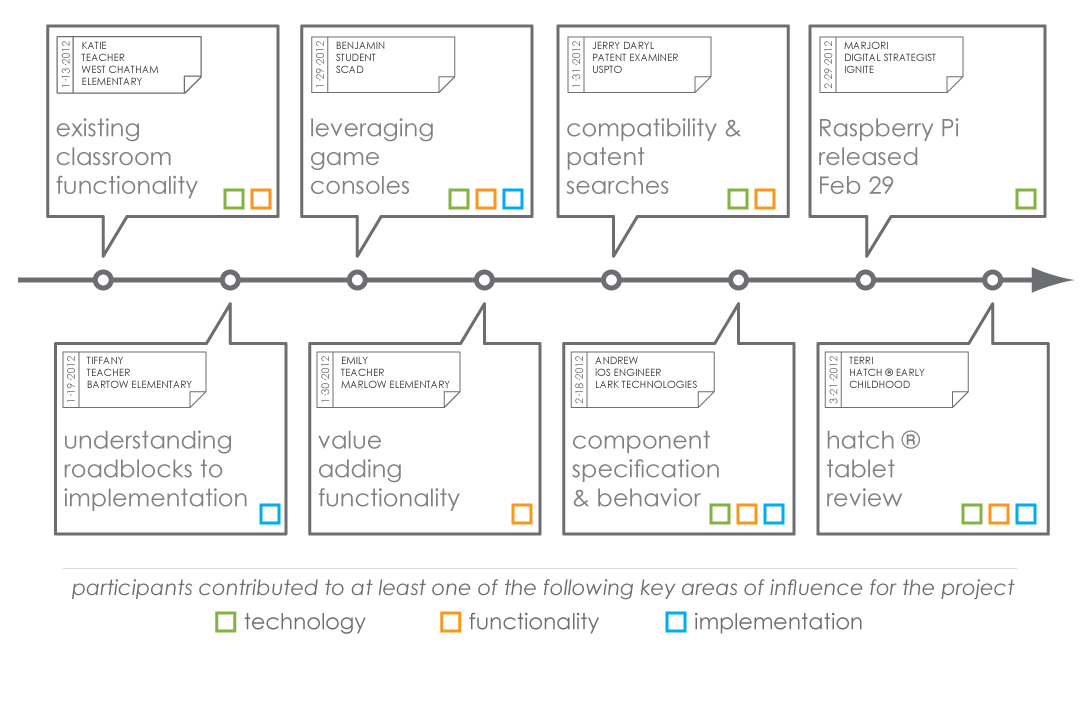
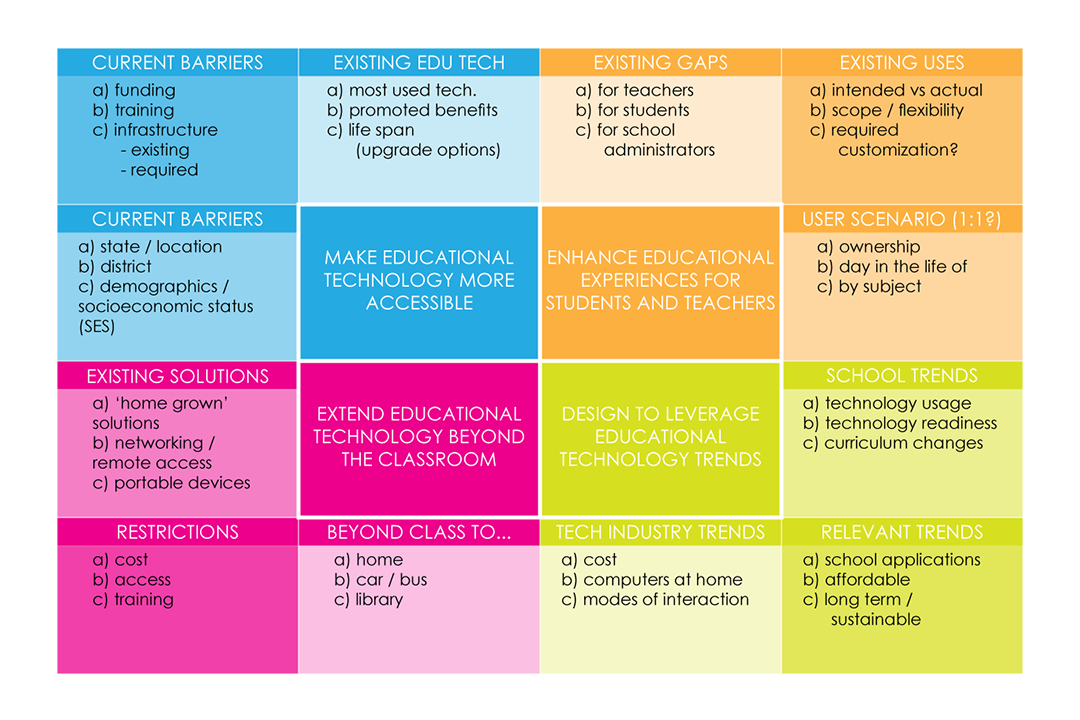

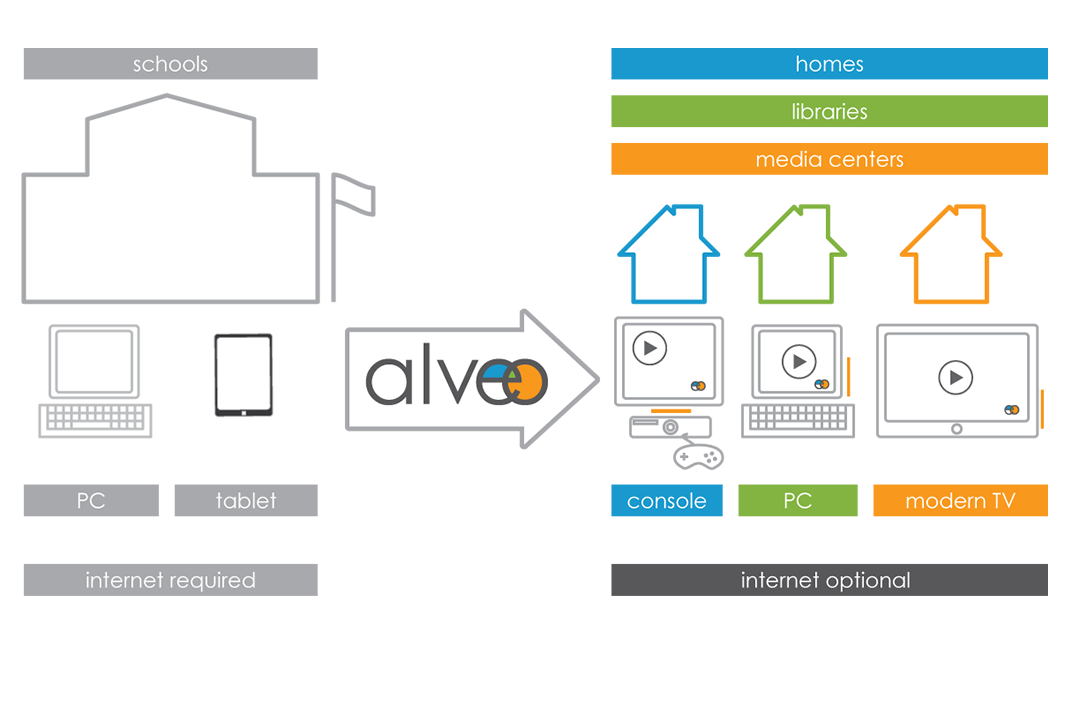
Branding
To ensure cohesion across all media, branding was developed to embody the essence of the project. Key descriptors were selected based on terms that surfaced throughout preliminary interviews as well as adjectives that described key project deliverables.
These descriptors were screened against brands, product names, and trademarks to avoid any conflicts or pejorative connotations. The resulting list was intended to be age appropriate, geared toward positive contextual associations, as well as common interpretation between parents, teachers and students.
The name alveo (Latin for channel) was selected followed by a typeface and color study resulting the final logo. The ligature of the letters ‘e’ and ‘o’ were intended to represent the connectivity embodied by the project.

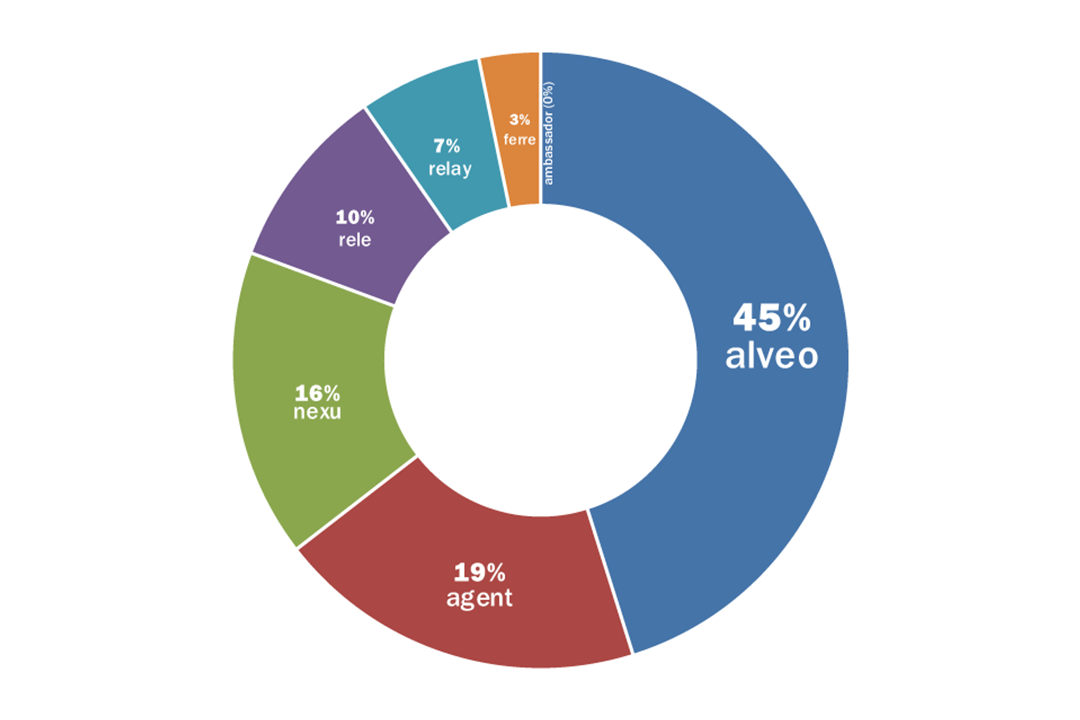
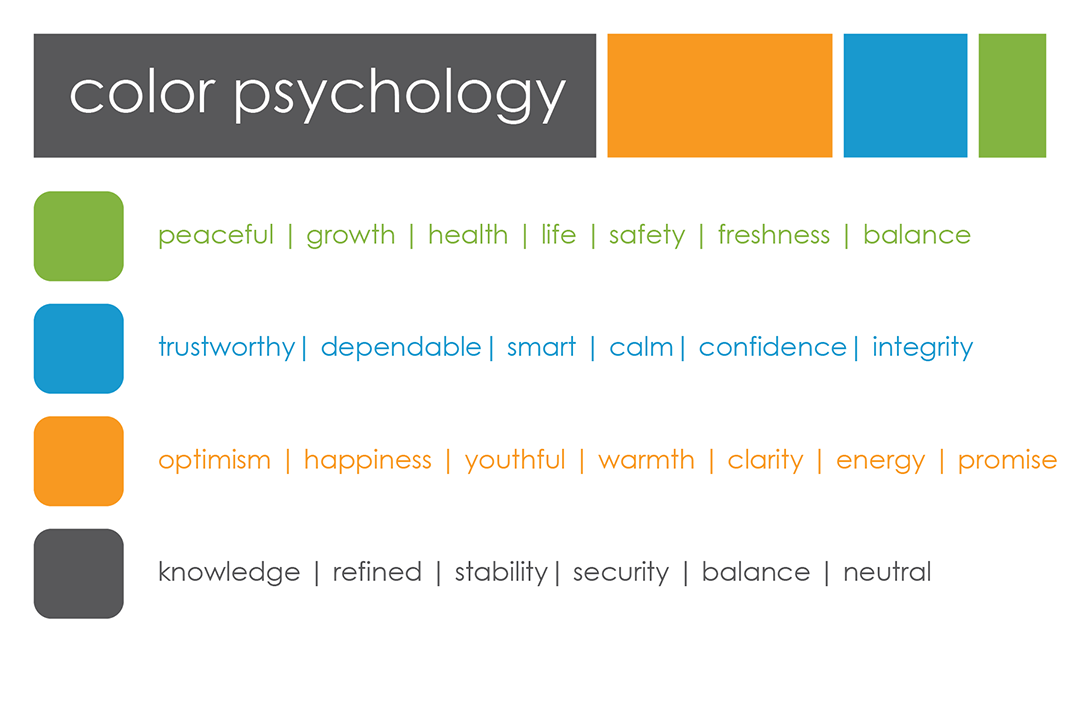
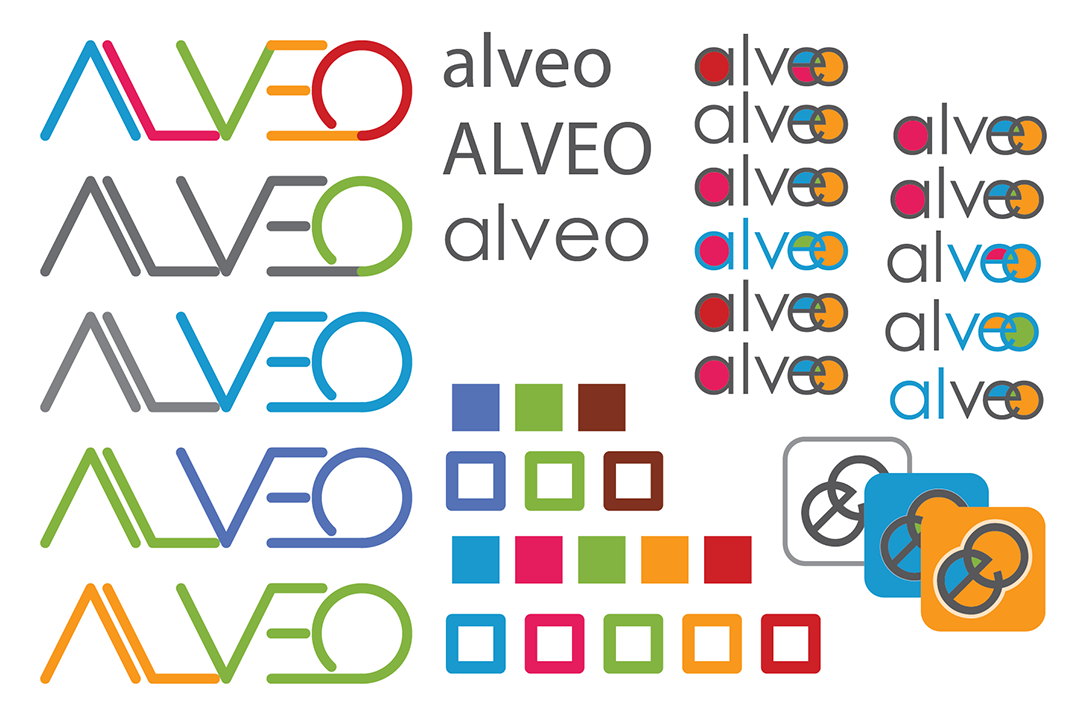
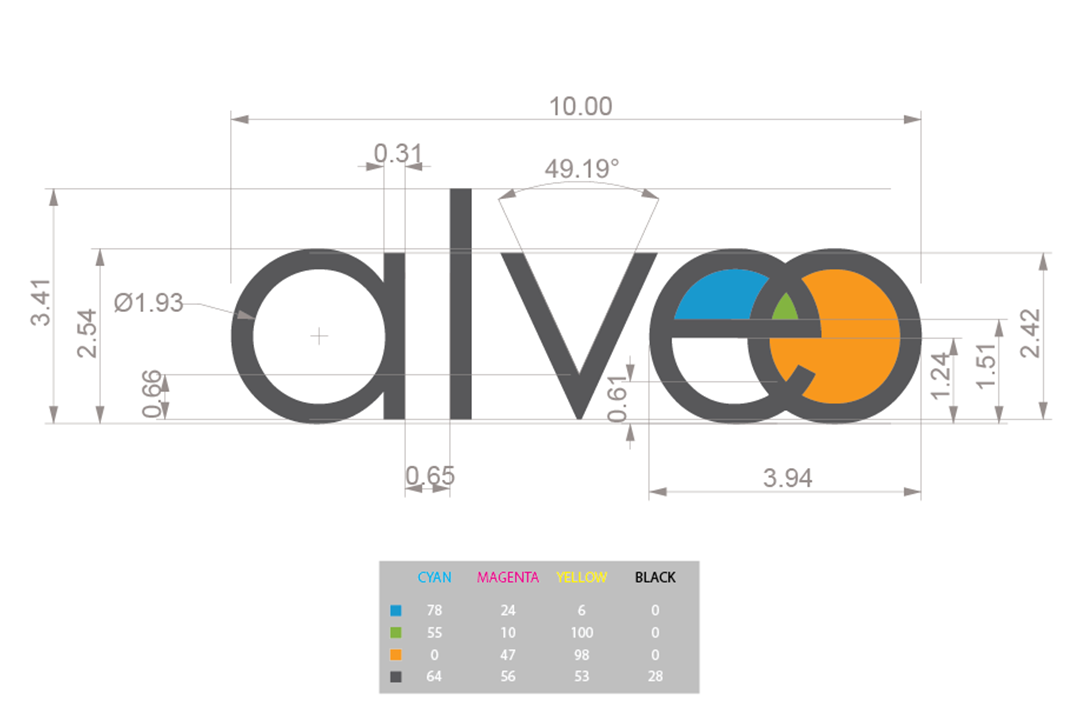
PCB Redesign
The foundation for the printed circuit board (PCB) of my peripheral was the Raspberry Pi® Model B. The Raspberry Pi® is a credit-card sized computer that plugs into your TV (display output) and a keyboard (input). It can handle computing and processing tasks just as desktop PCs, like spreadsheets, word-processing and games in addition to playing high-definition video. Developers envisioned the Raspberry Pi® being used by children to learn programming. It was selected based on price and its potential to evolve into a powerful tool to support educational technology in schools.
After several iterations components were re-positioned, replaced and in some cases removed. Functionality was based on the alveo system requirements and so any original Raspberry components were altered without compromising integrity.
The resulting alveo PCB has a reduced part count with a custom shaped board. Any additional cost associated with deviation from the original rectangular board is negligible in comparison to the savings with removing RCA video and audio ports per unit.
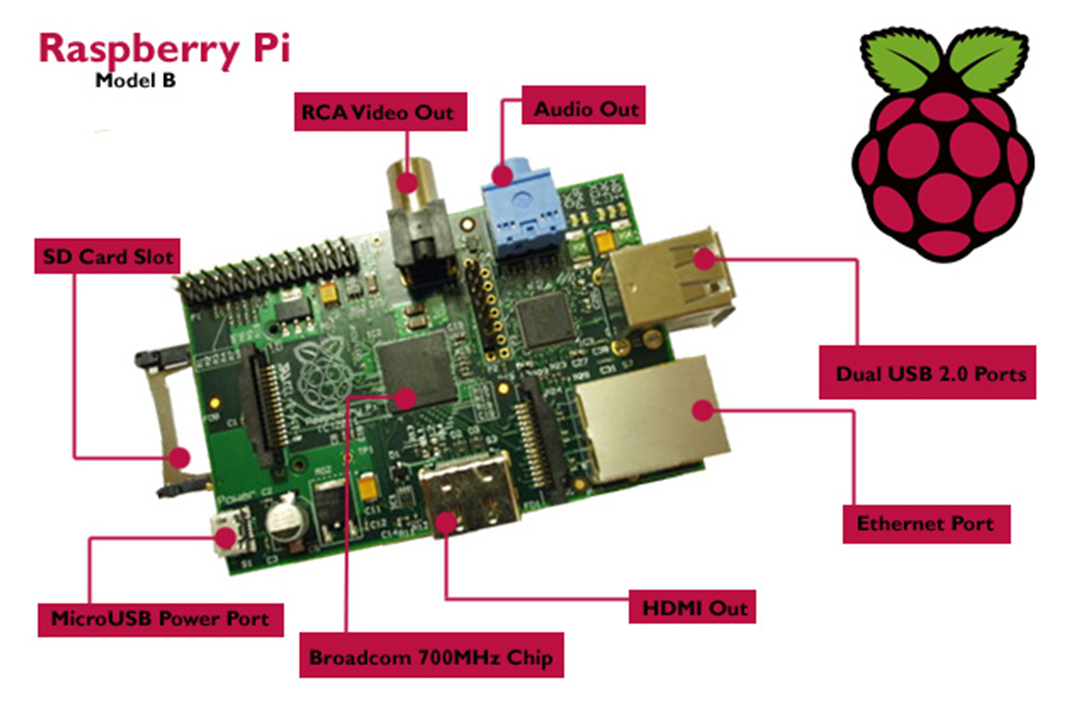
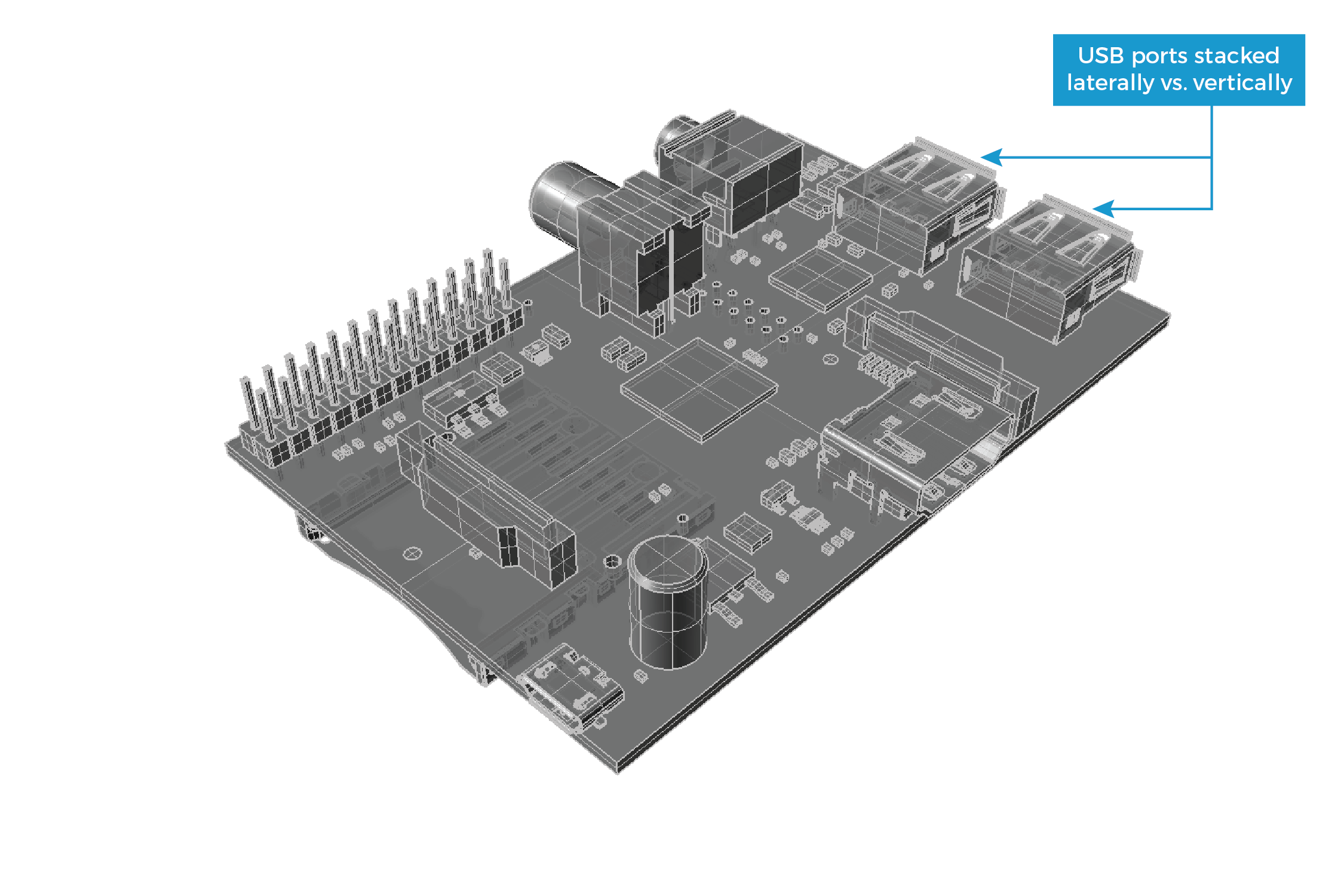



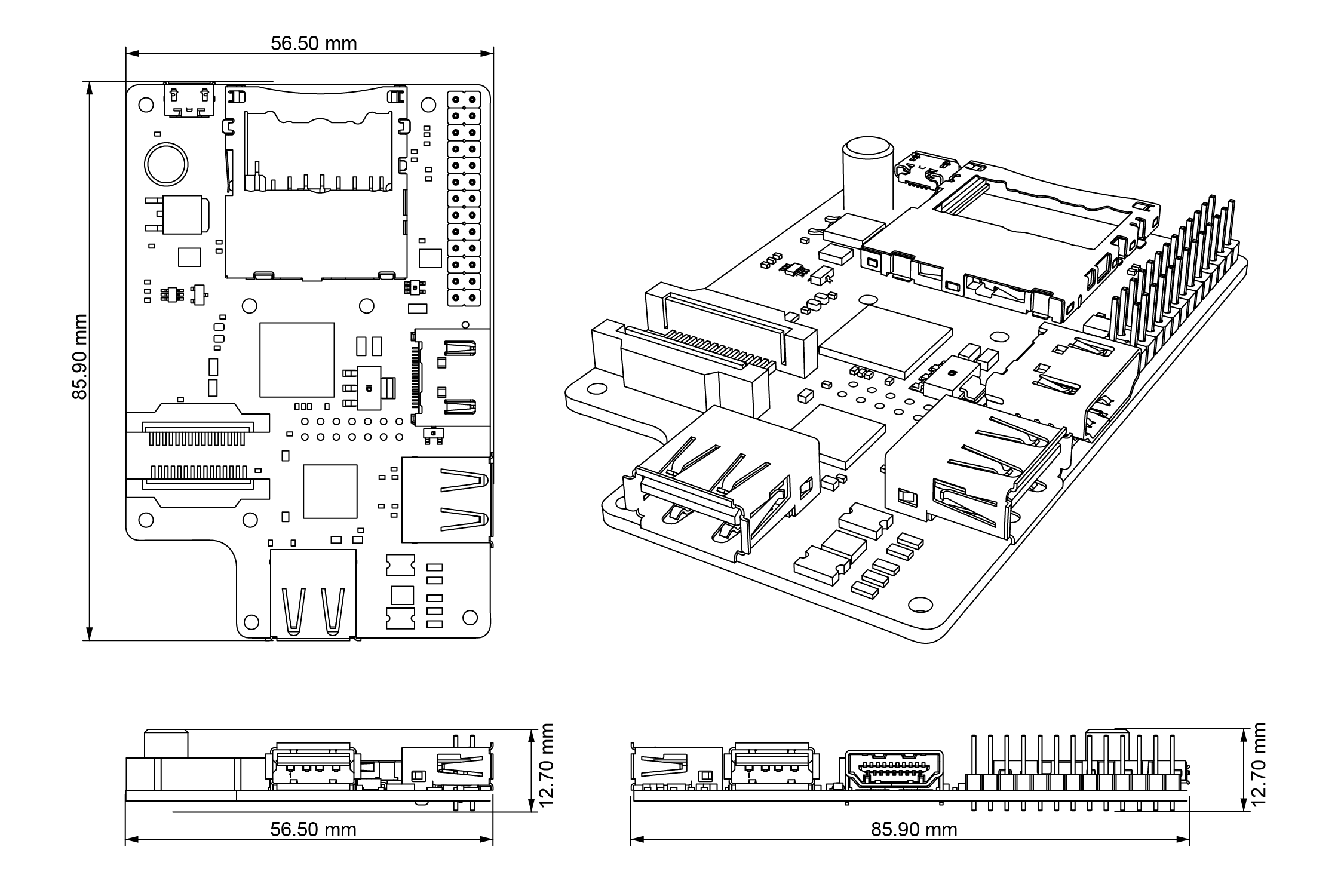
Peripheral Design
The proposed design was developed to require as little vetting as possible prior to manufacture and the price point still fell below $40 USD, well within reason for public school implementation.
The final design was realized through:
Image Ranking: quantify customer perceptions
Ideation: iterations throughout concept development
Refinement: utilizing the redesigned PCB underlay.
3D Exploration: housing designed to component specifications
Prototype: professionally finished full scale model
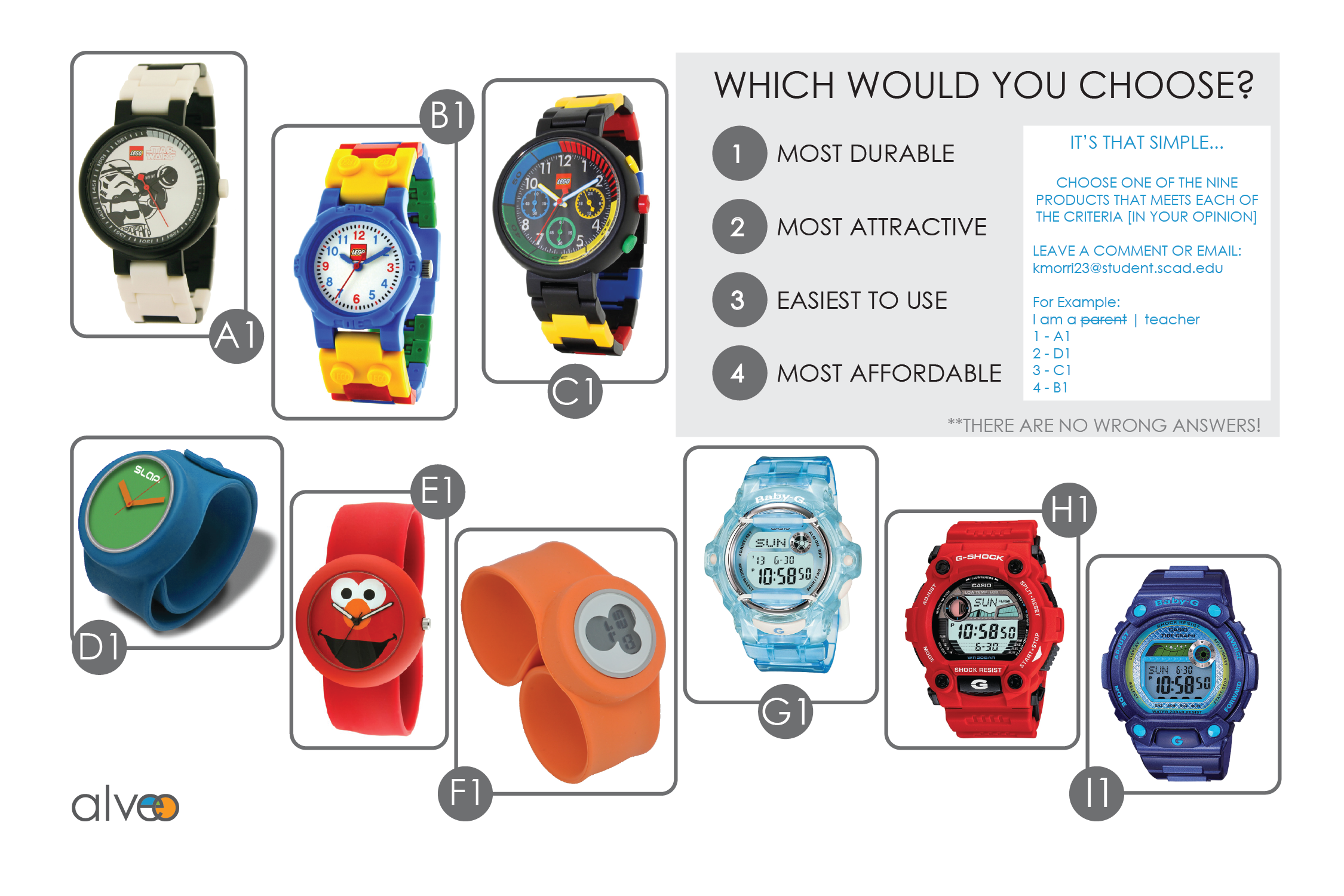
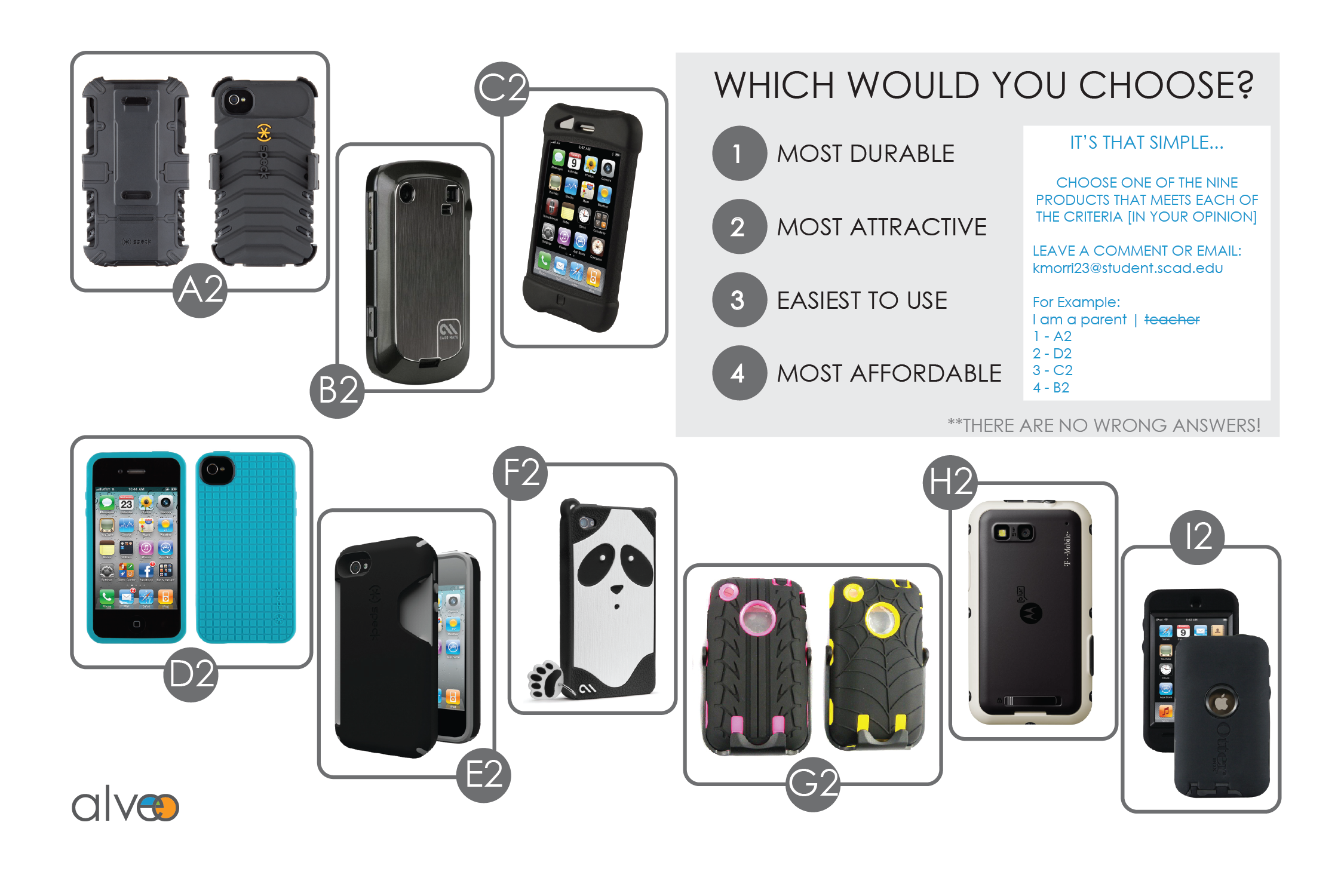
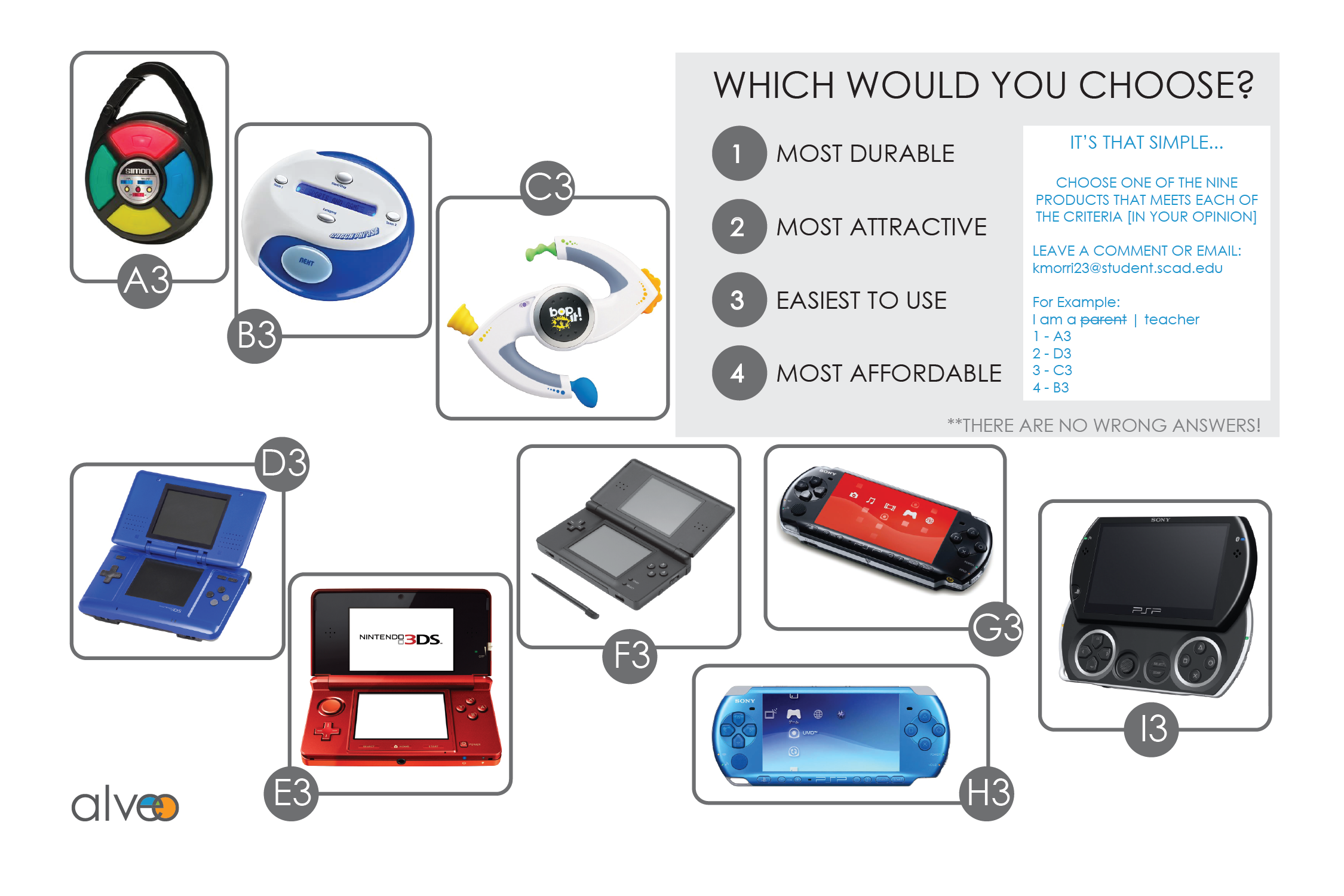

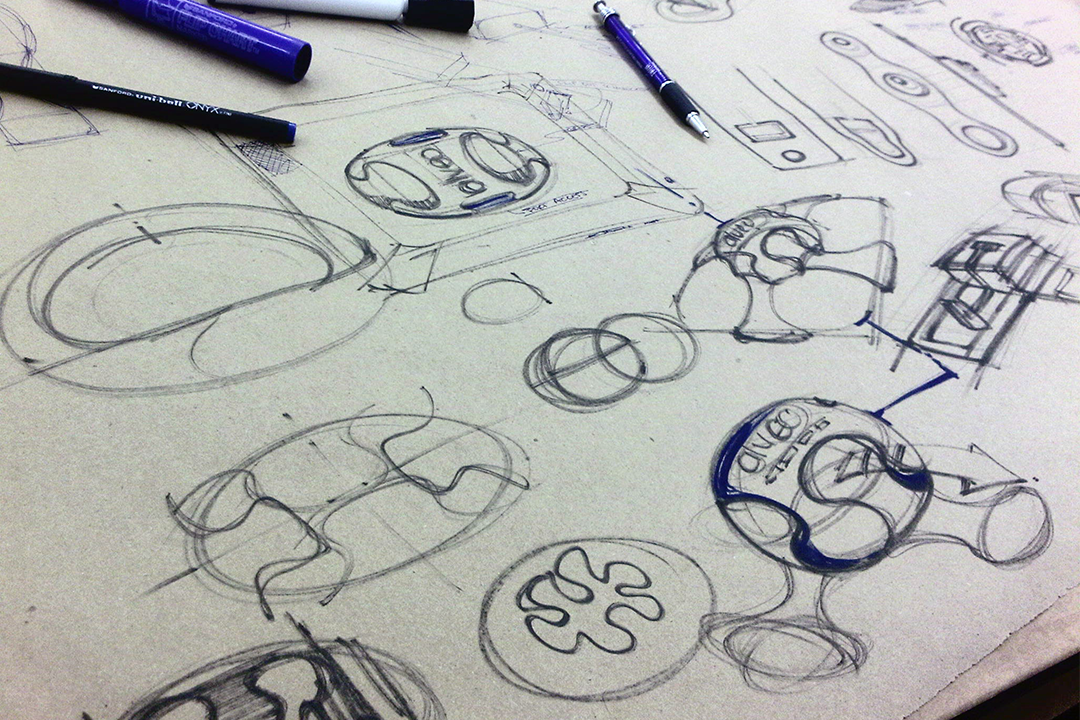


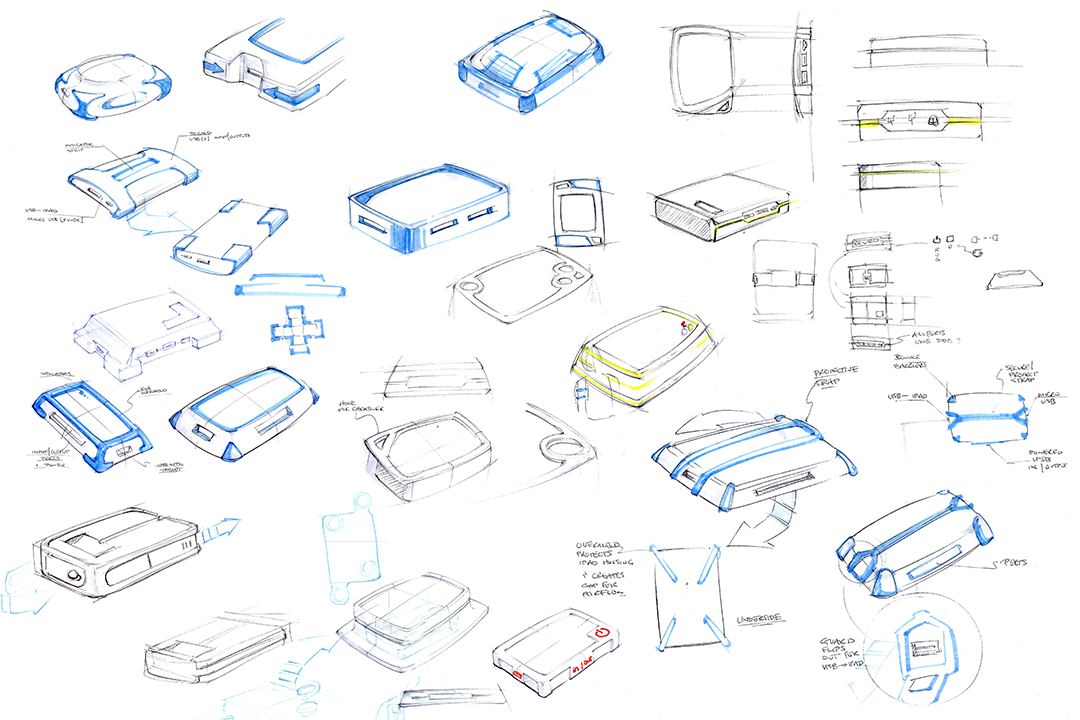

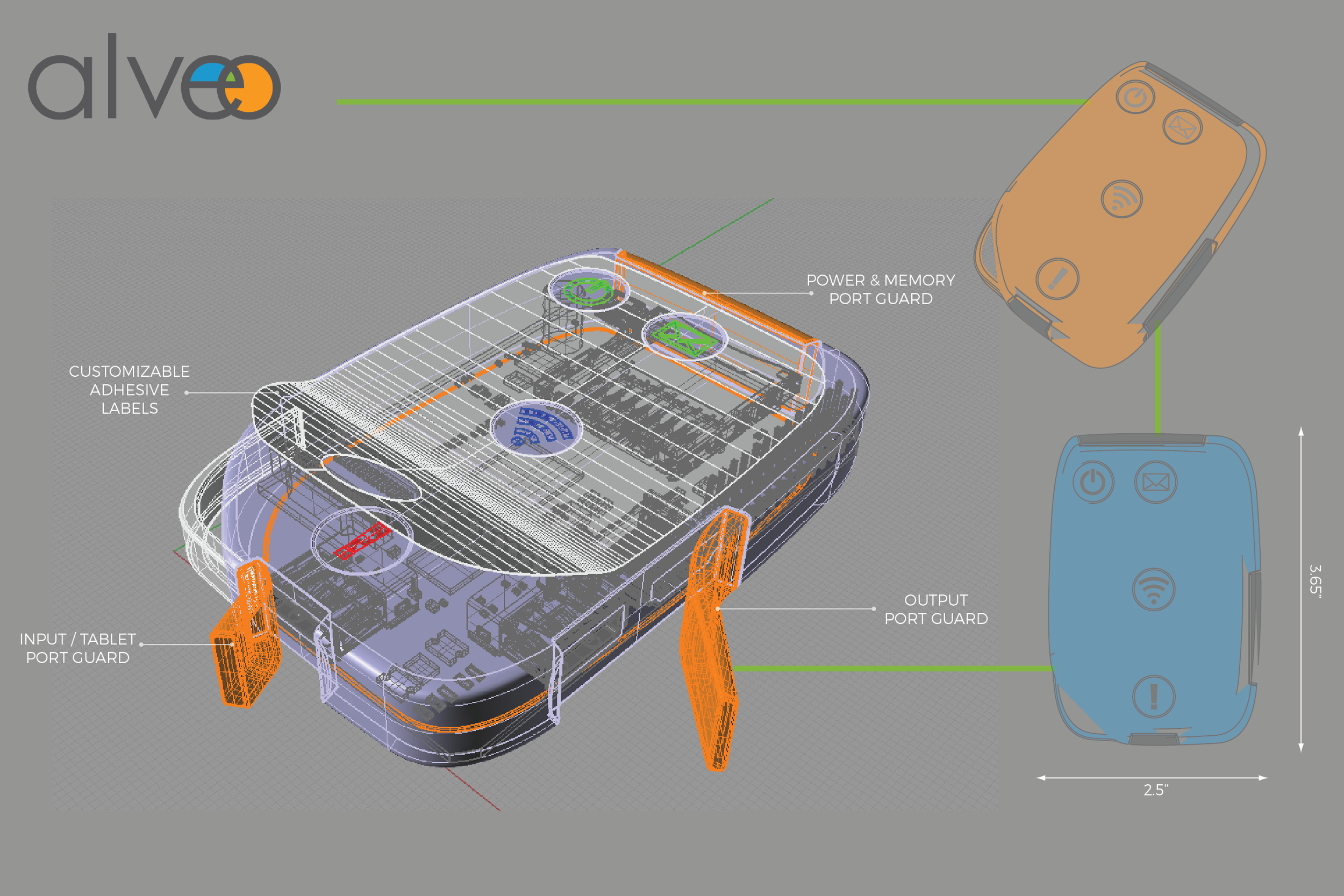

Design Specification
The case design serves as a protective housing for the redeisgned PCB and is constructed from durable ABS. Overmolded luminescent thermoplastic polyurethane (TPU) bump guards are placed at the corners to help dissipate energy if the device is dropped. Port indicator icons are debossed on the underside of the case along with the alveo logo. Upper and lower case sections are press fitted together and secured with screws through the lower section and into bosses in the upper casing.
Application Design
The application would support the peripheral device and manage data synchronization. It would also manage the interaction between teachers, parents and students using the system.
The interface was guided by principles of interaction design, with each screen designed to be:
perceivable
learnable
consistent
With this in mind as well as remaining aware of my target elementary range of K-4, I set about identifying the functionality. This was guided by previous interviews with teachers as well as experimenting with navigating common digital interfaces namely web pages, mobile phones and DVD menus.
The design also took into account the transition from the versatility of touch screen interaction to the limits of the analog controls (television, cable box and game consoles). The layout was designed to be interpreted from the application iconography and reinforced by descriptions and labels where appropriate.
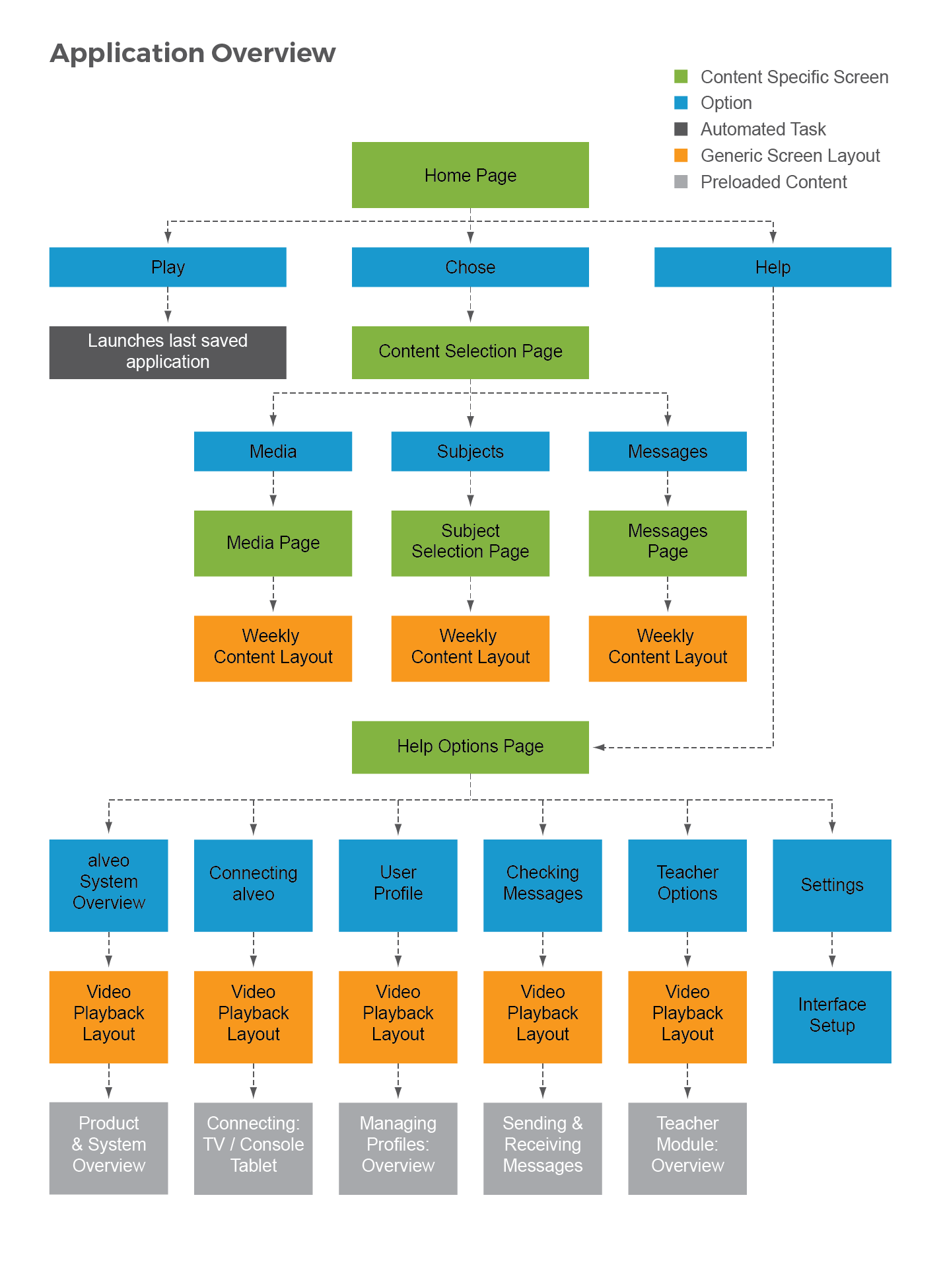
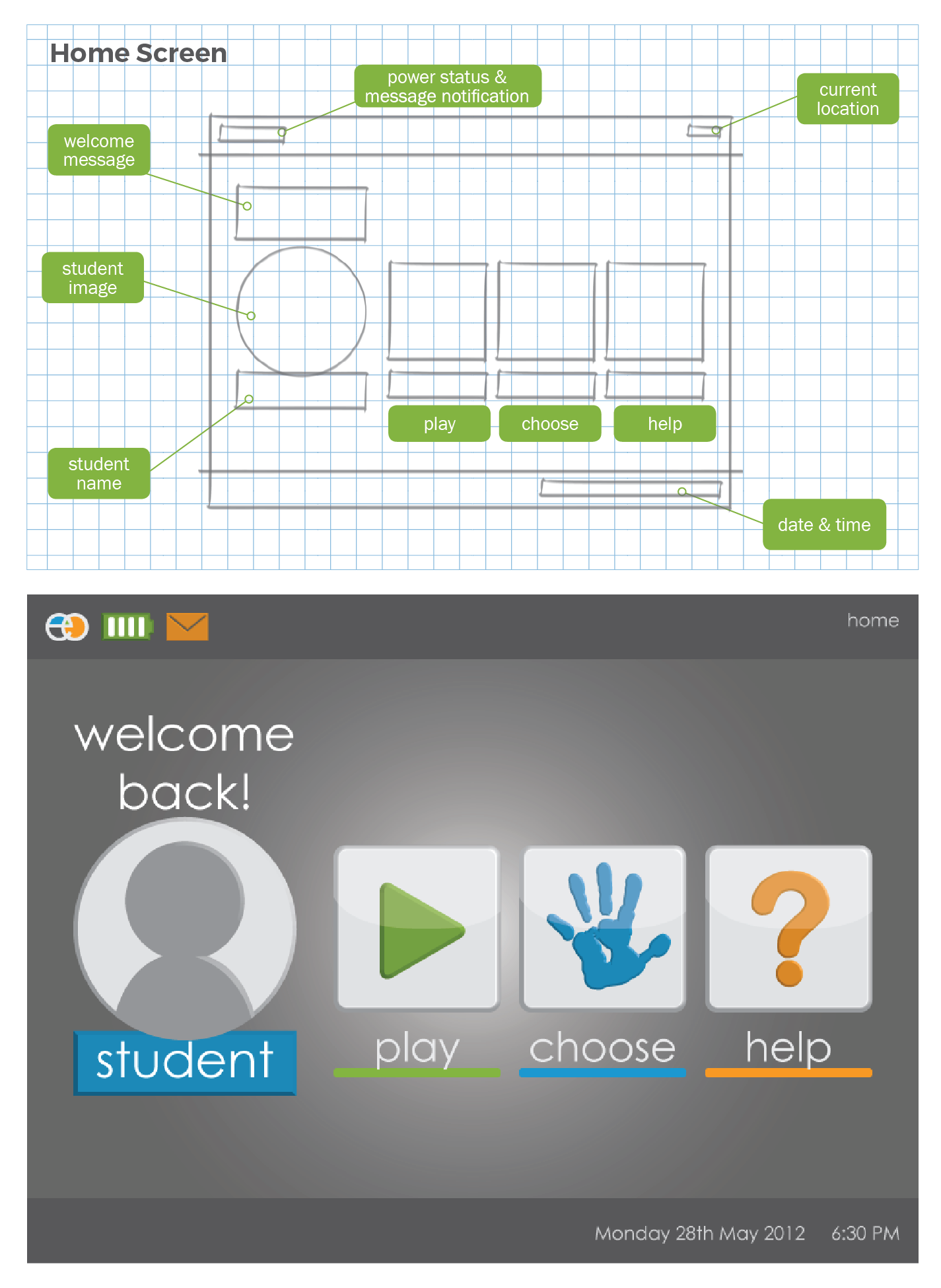
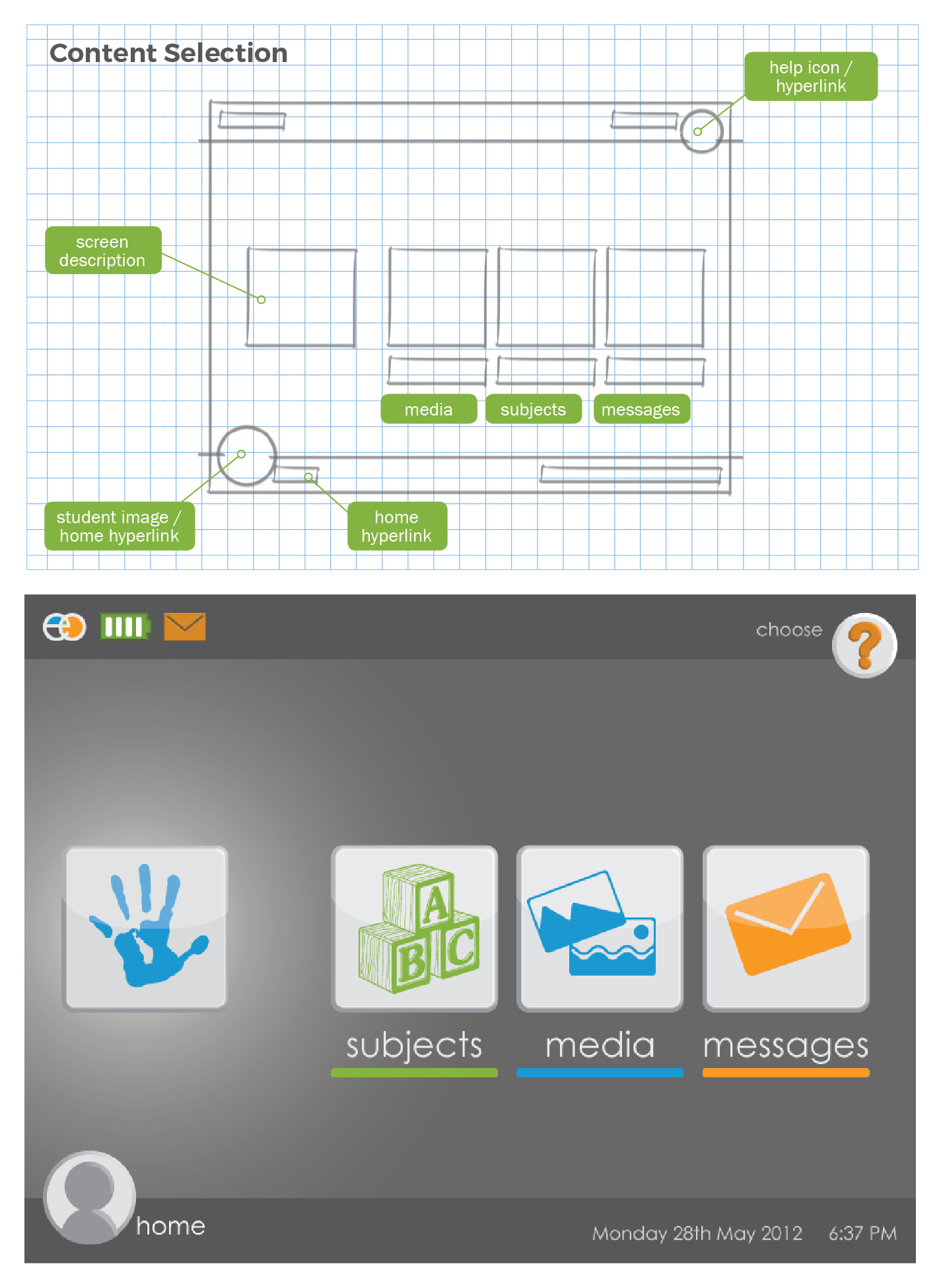
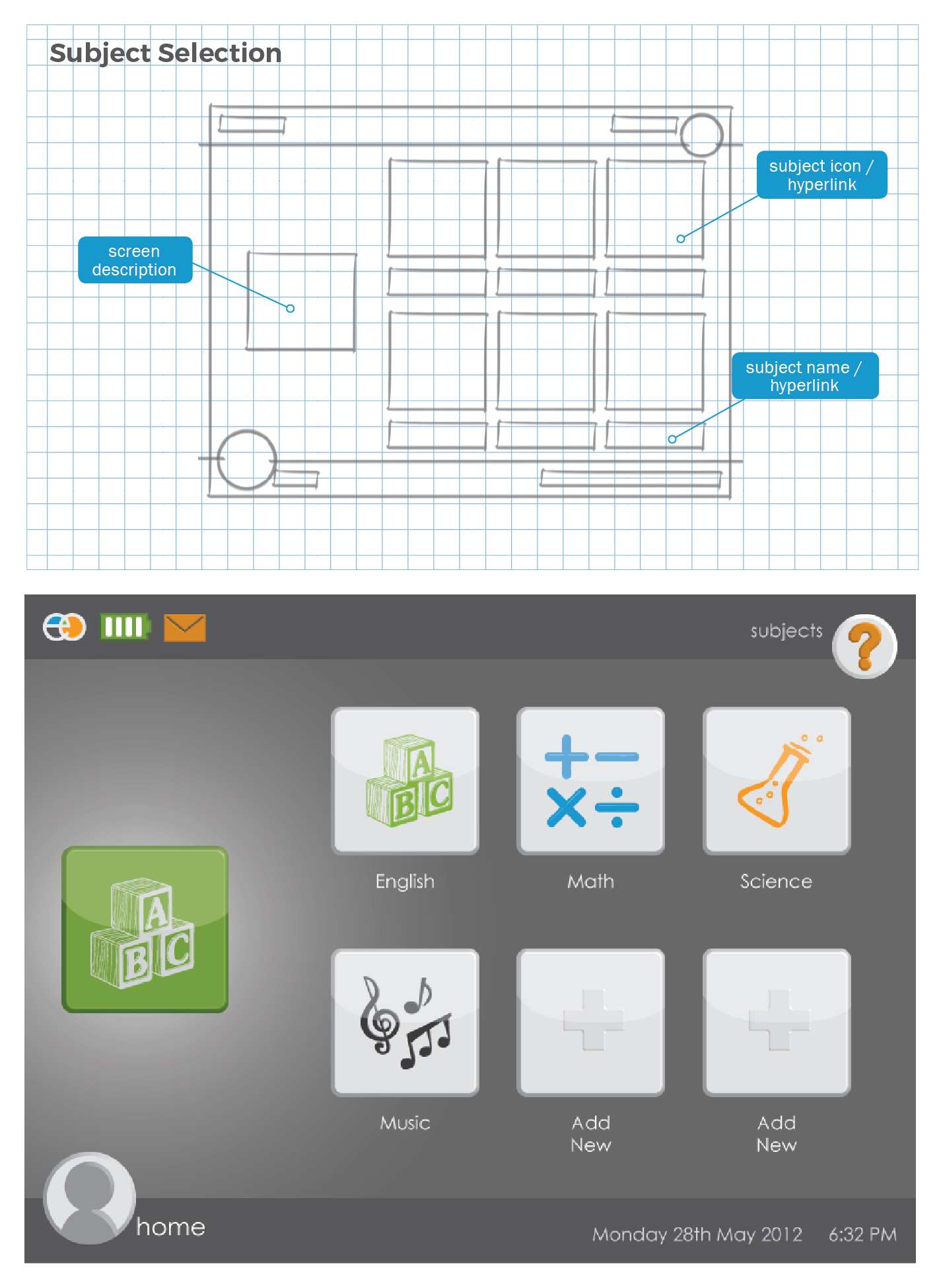
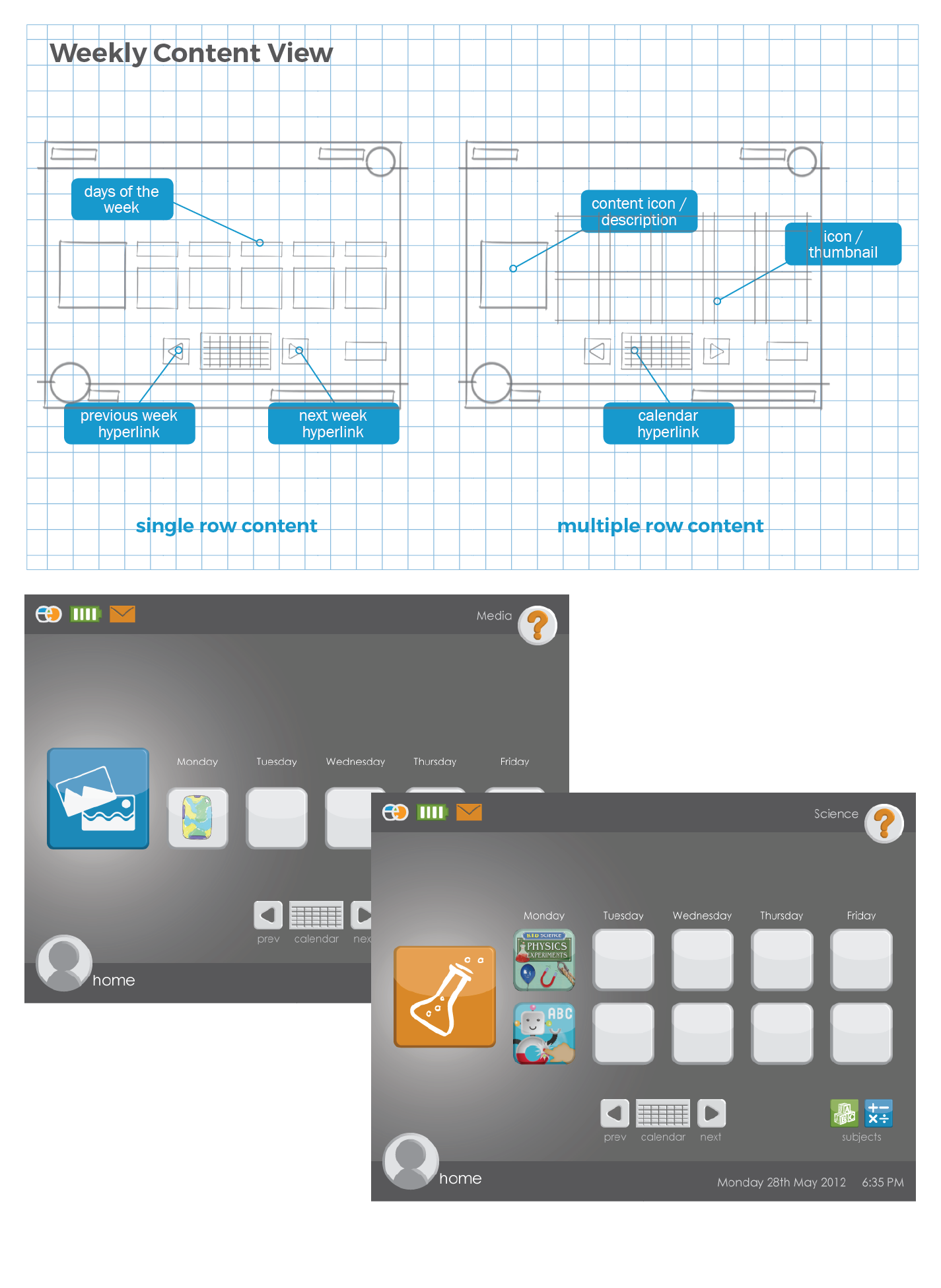
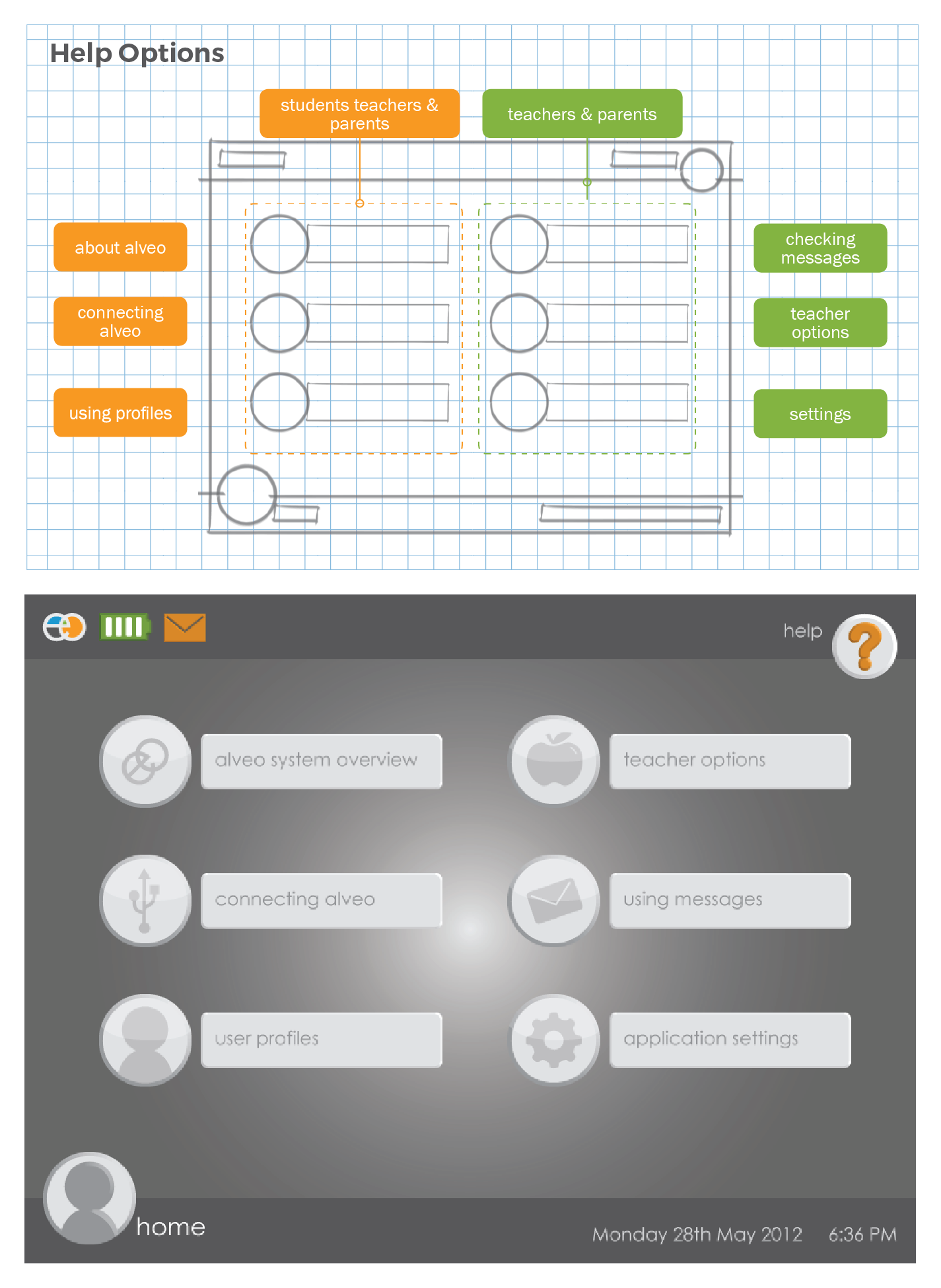
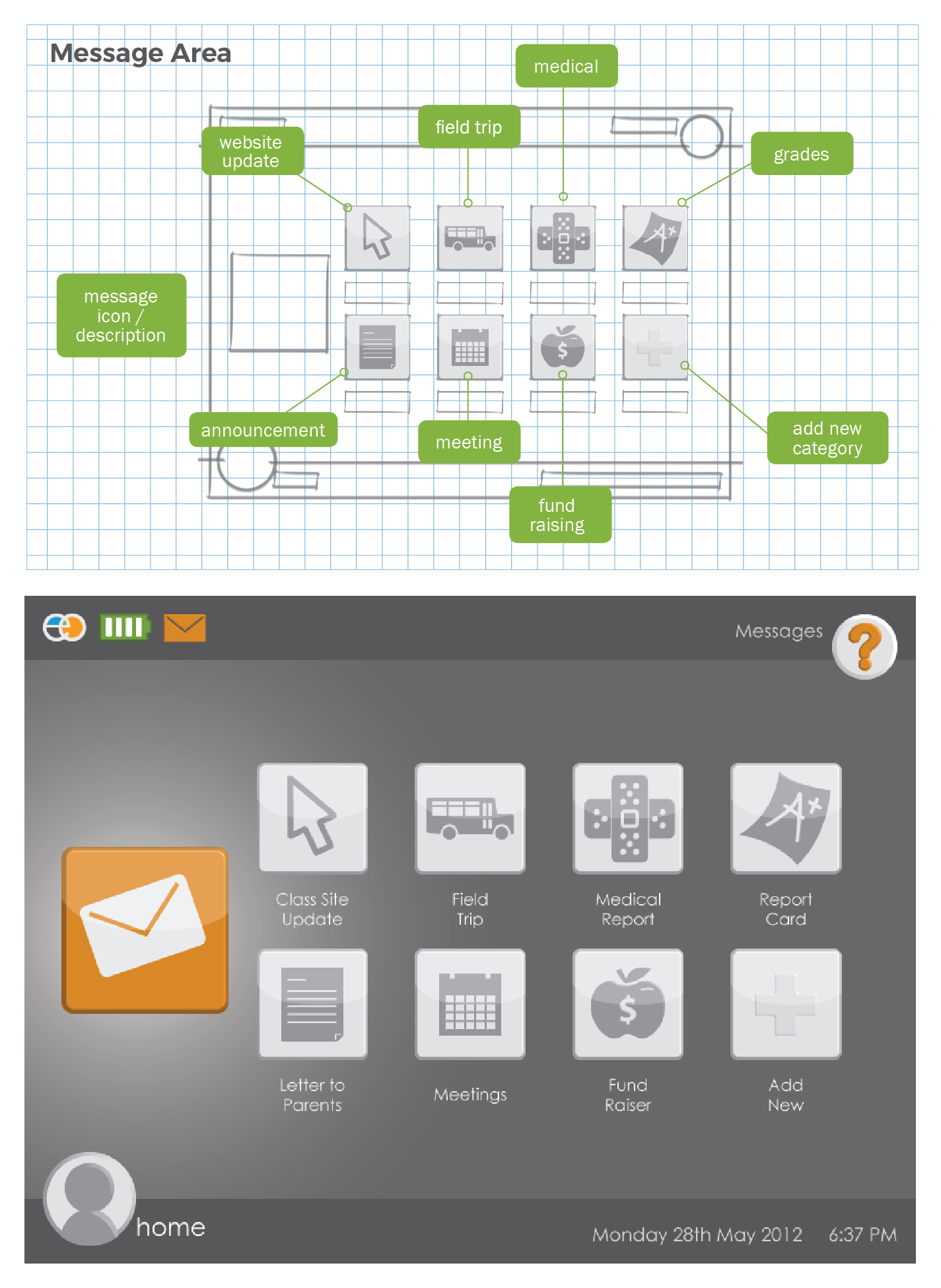
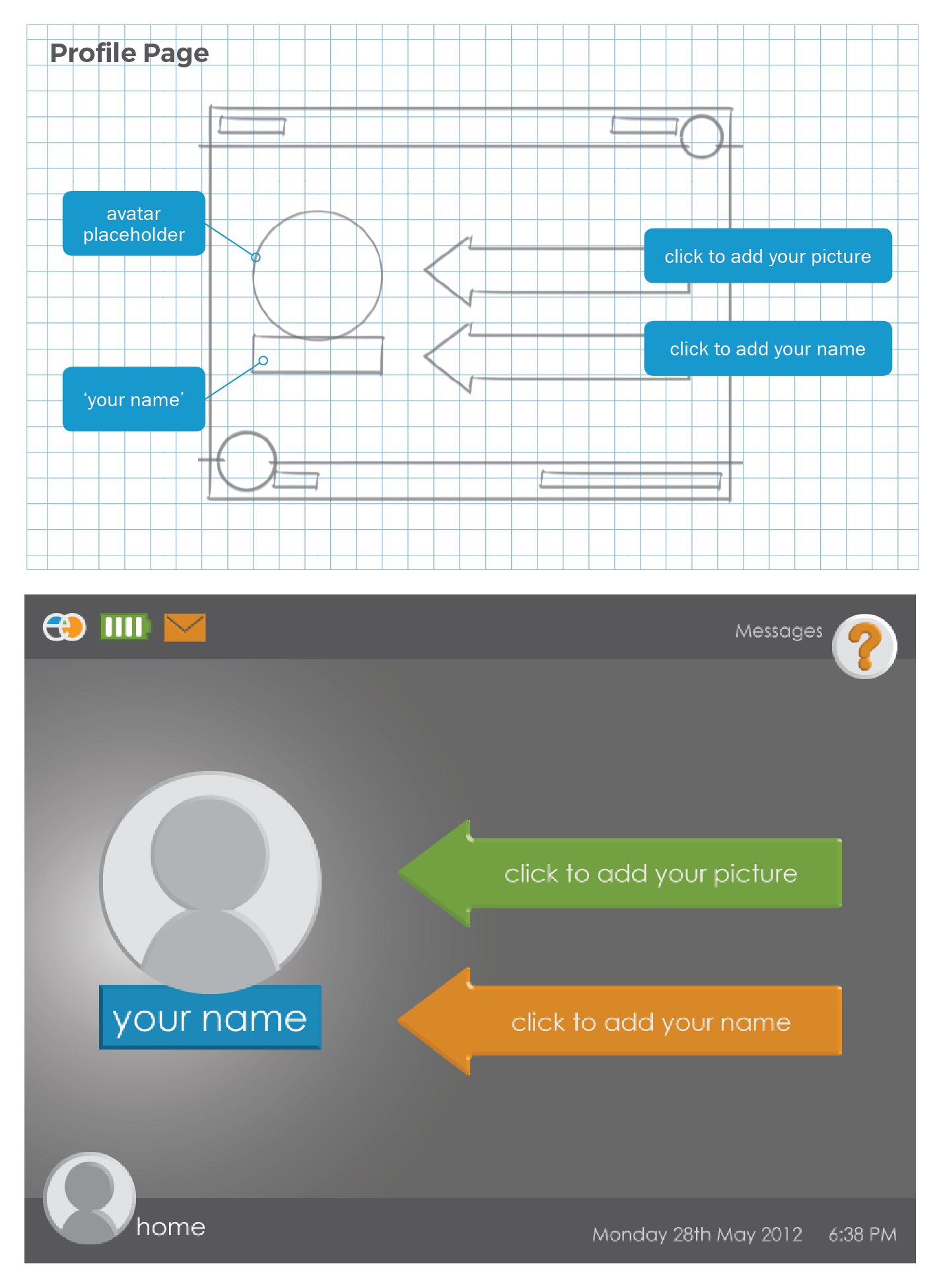

User Testing
I was granted access to a second grade class of 22 students at West Chatham Elementary School (WCES). While at WCES I gathered feedback on two appearance prototypes and a preliminary application interface. The students then designed their own cases.
Key Findings:
Many students were already familiar with tablets (though in some cases they were not allowed to use their parents’ iPads).
Students' perceived the value to range between $5 and $90.
There was a common concern for the safety of the device from pets and younger siblings while at home.
Some of the icons in the interface needed to be larger and labeled appropriately based on teacher and student feedback.
Simpler was better, with students preferring the geometric case and not wanting to have to pull away guards to access ports.
Based on student recommendations for personalized cases, I quickly copied case outlines for students to express their ideas.
Some definite themes emerged and the students ended the exercise on an enjoyable note.

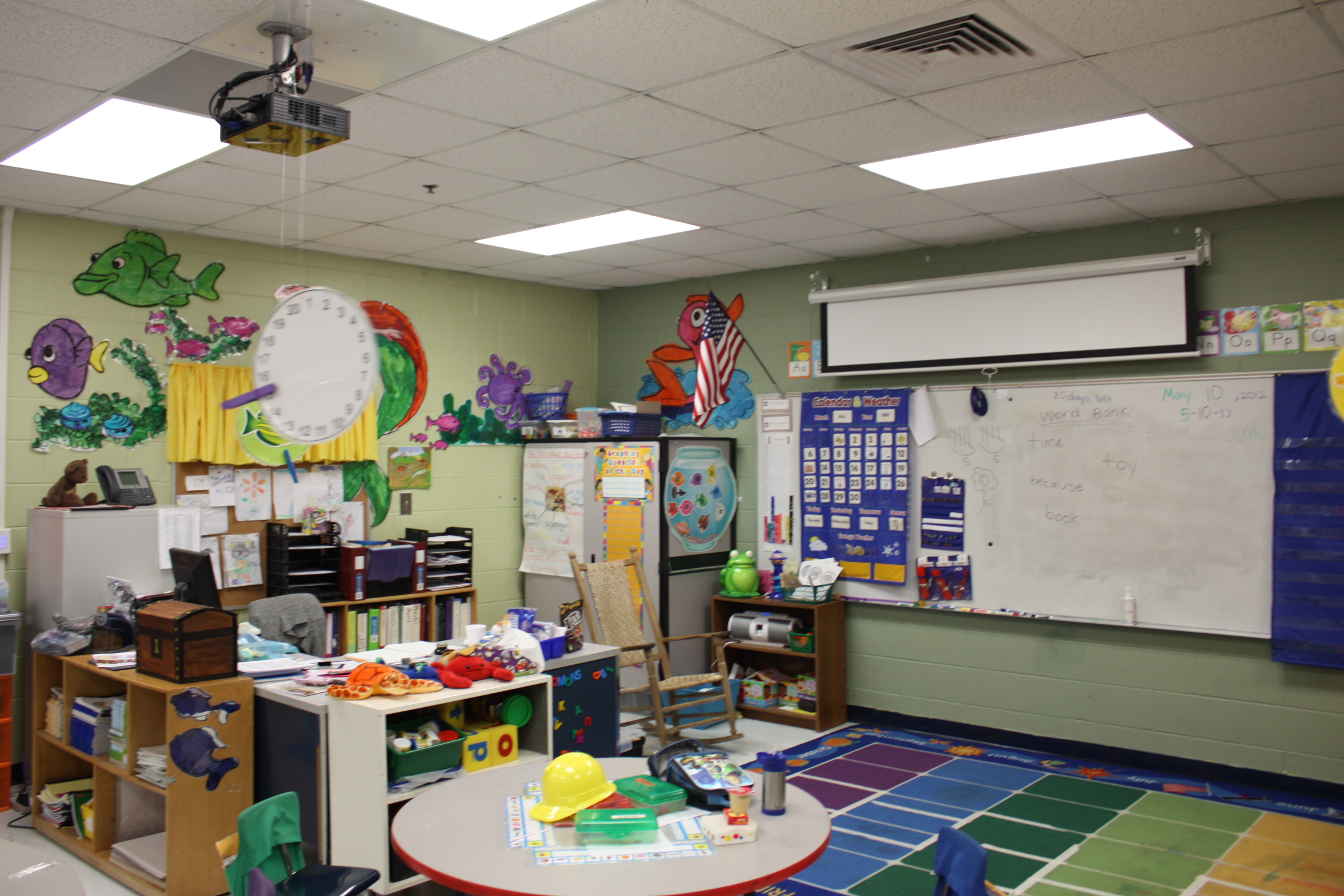


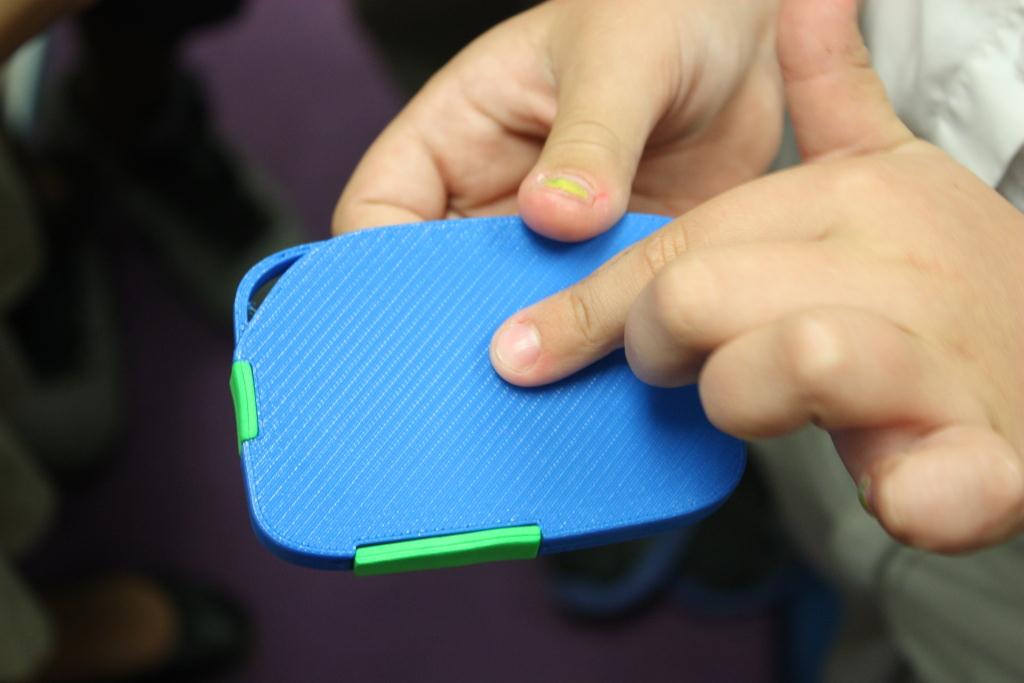
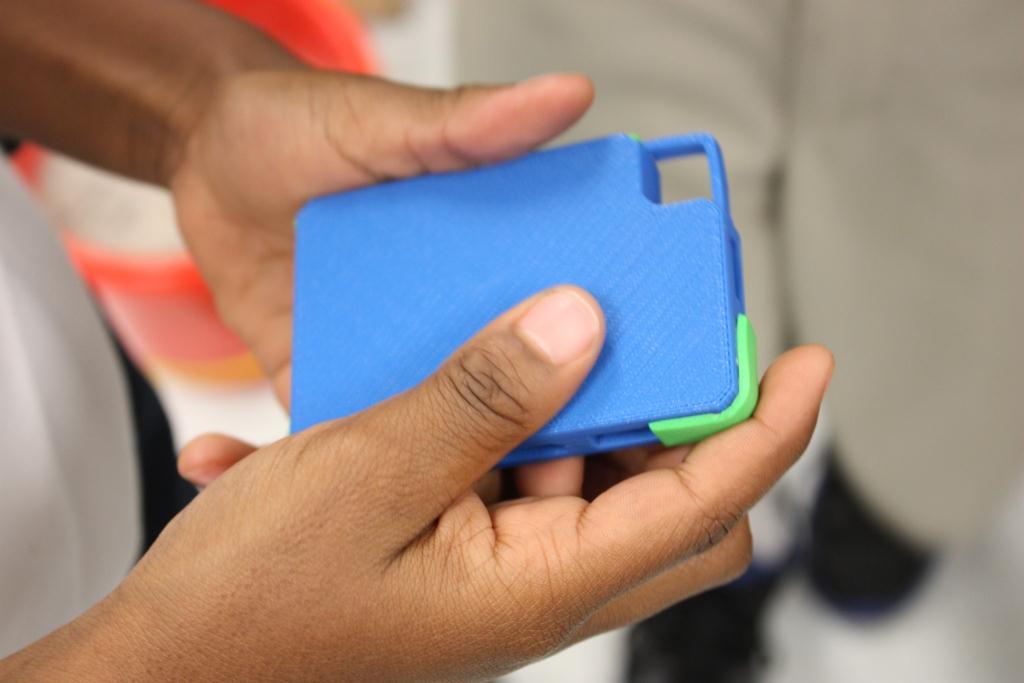
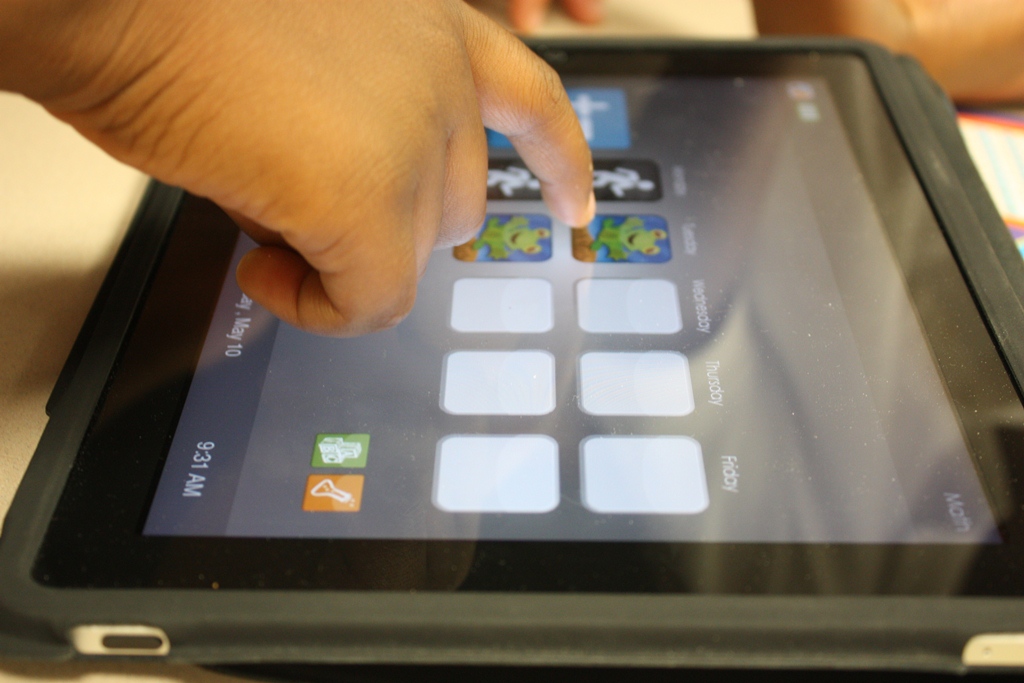

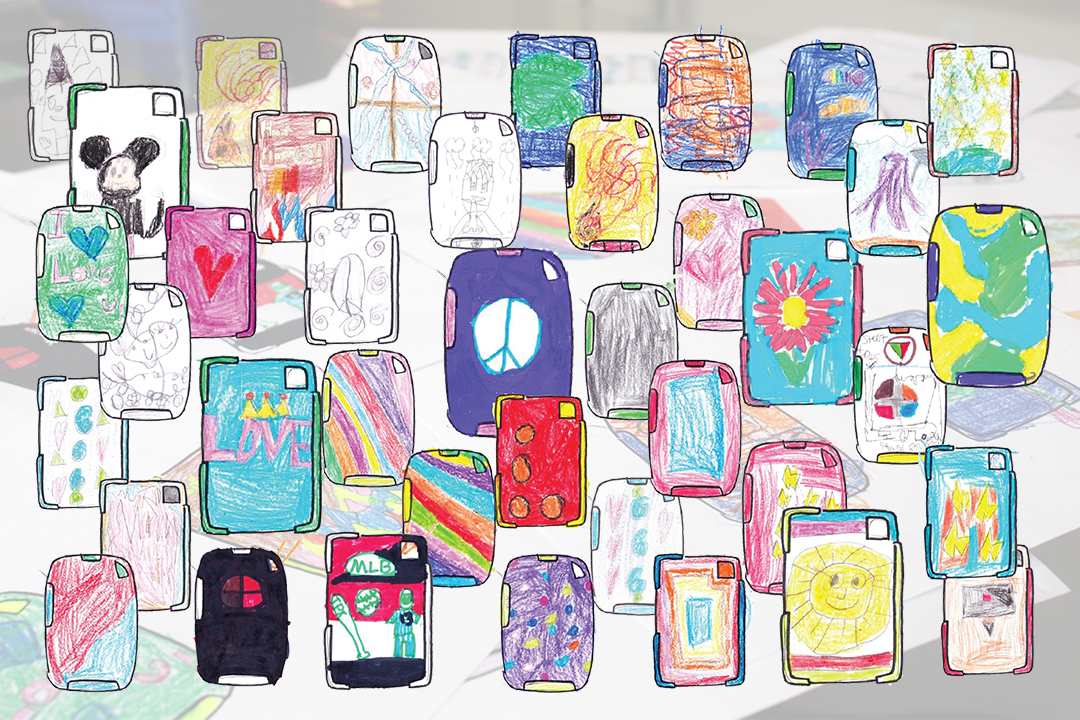
This presentation was used to test the layout and framework with students and teachers.
Final Design & Implementation
The alveo system takes the educational technology experience beyond the classroom and makes the content available remotely at homes, public libraries and media centers. It removes the need for an internet connection by providing access to media acquired throughout the school day via a durable peripheral device.
The system is comprised of the peripheral device that connects to the student’s tablet, an application that controls the transferal of digital media between the tablet and peripheral, and an implementation strategy to control the successful integration of the peripheral and application into the curriculum.
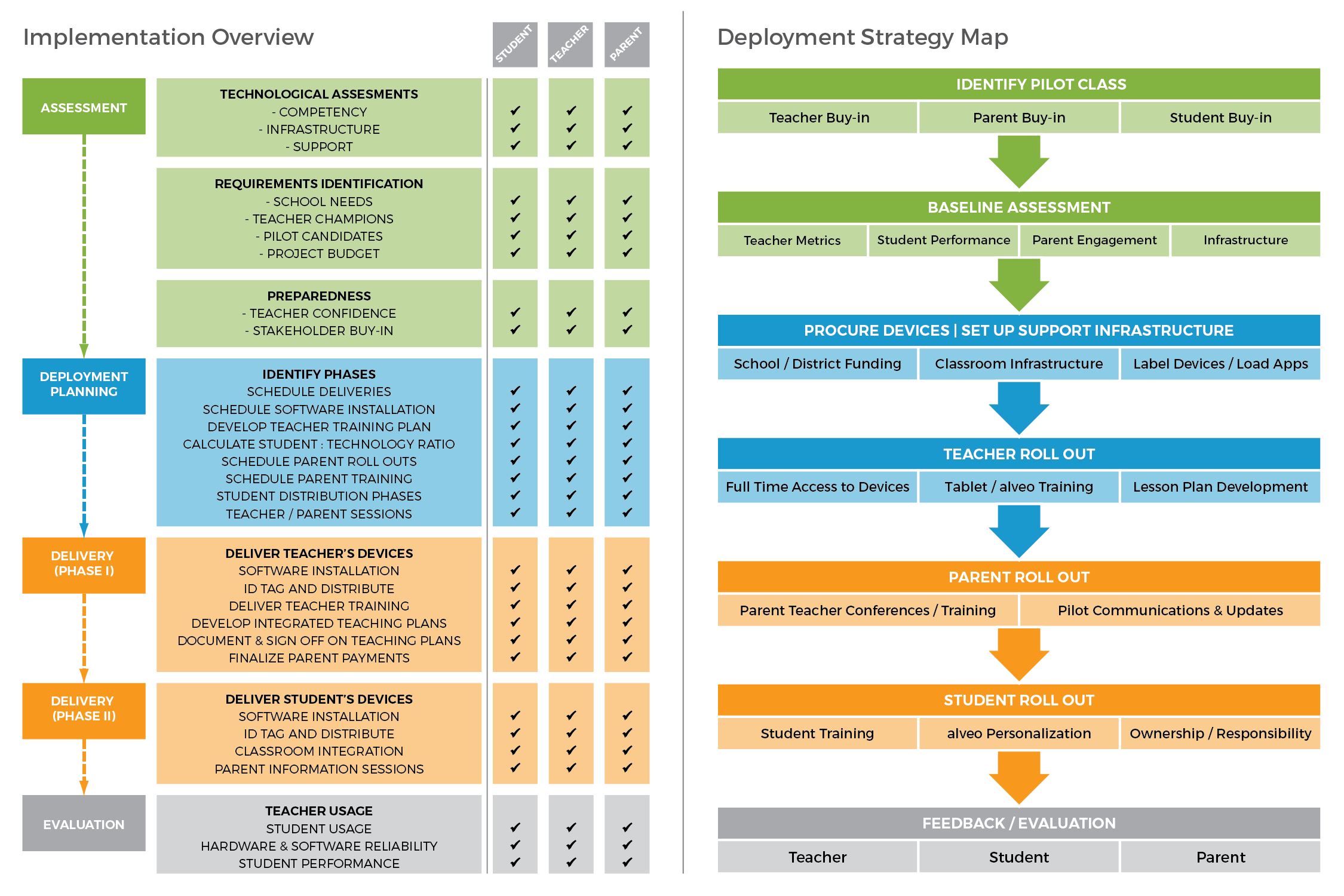
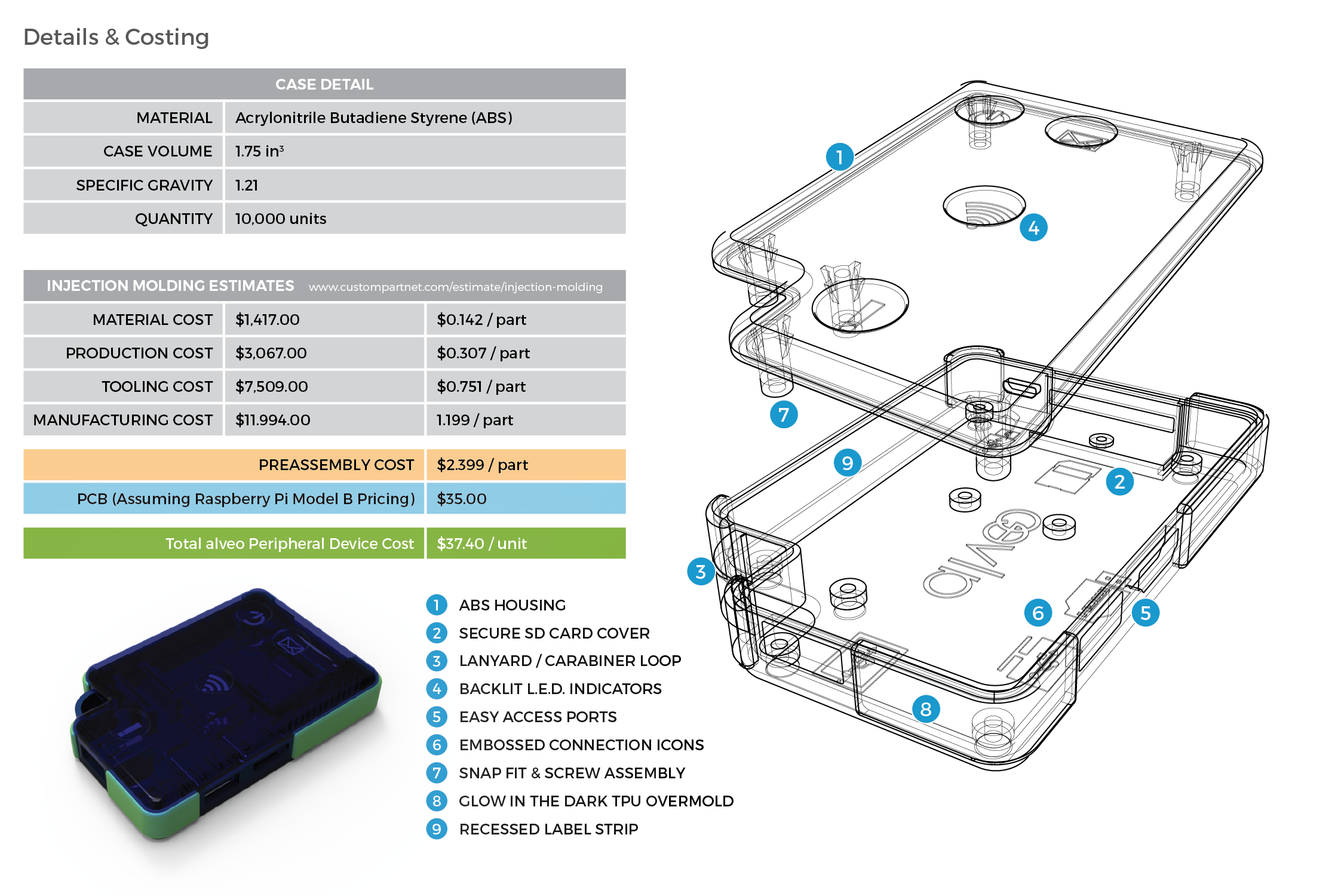

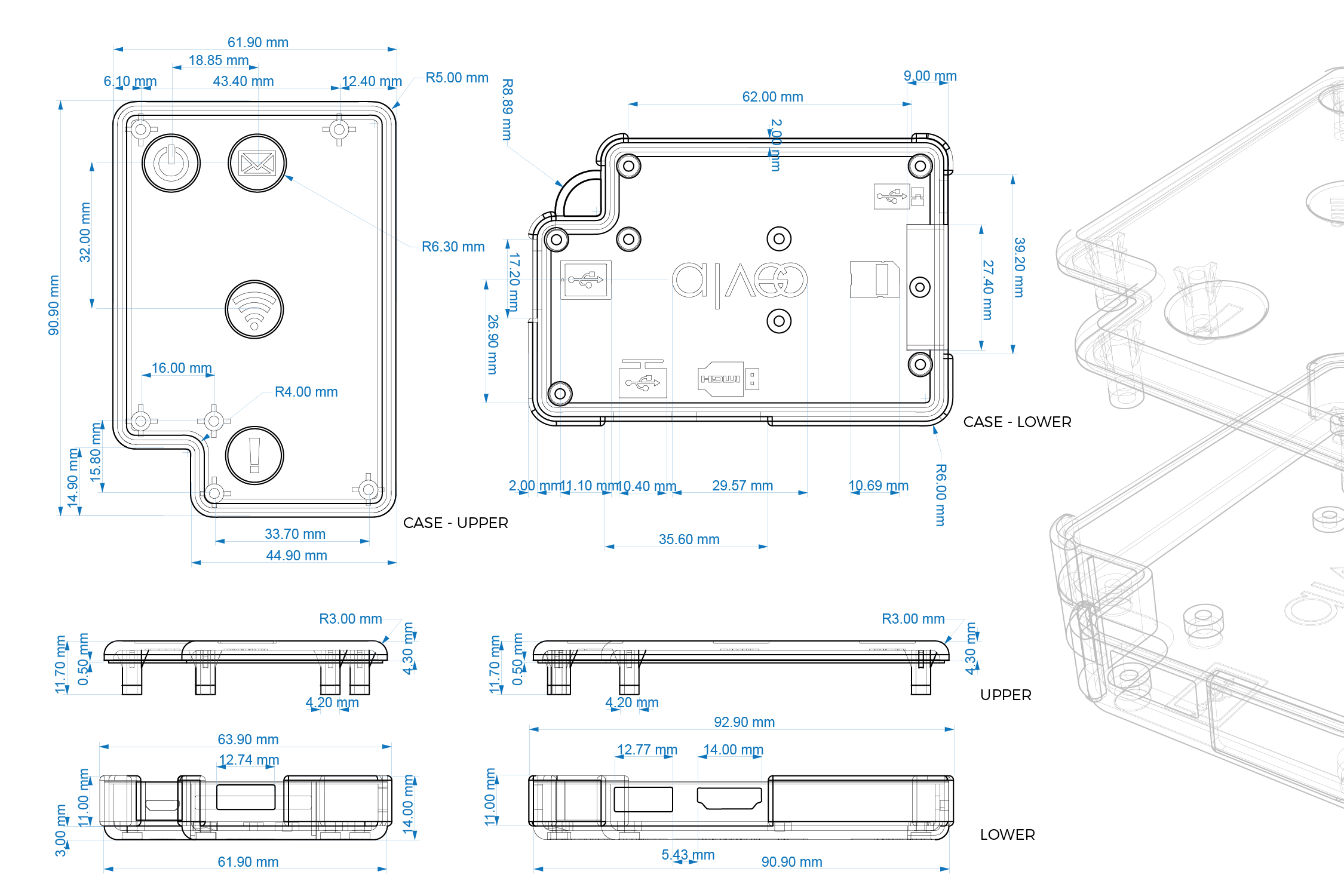
PROTOTYPE

